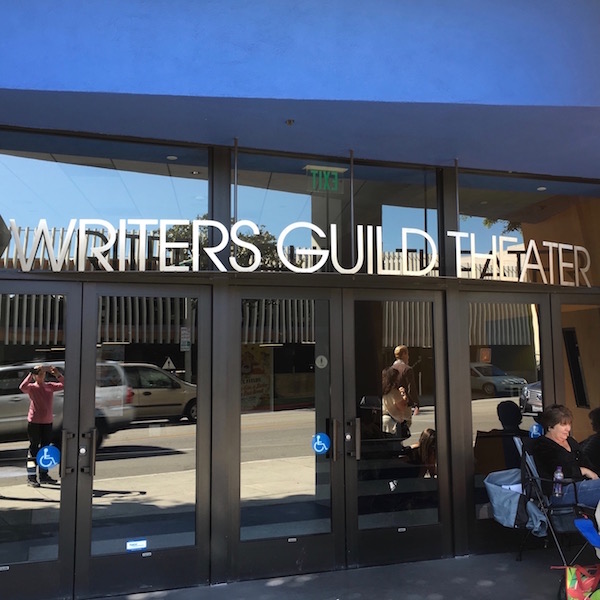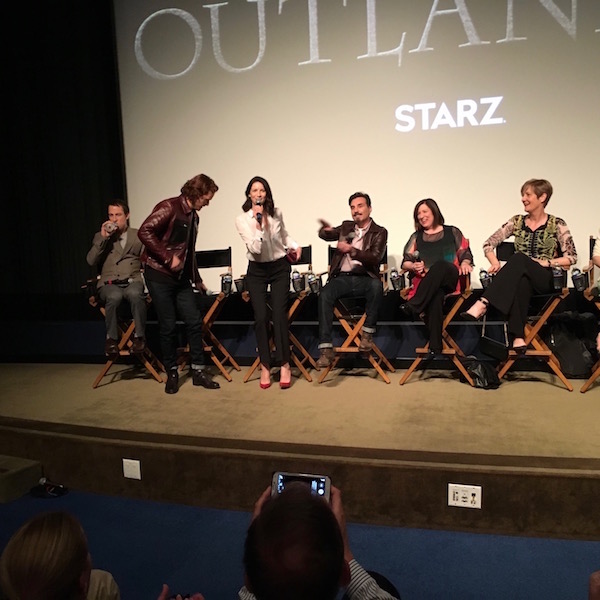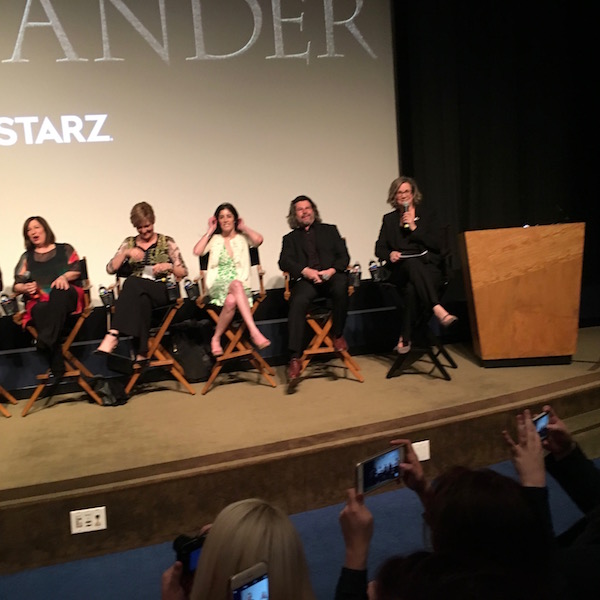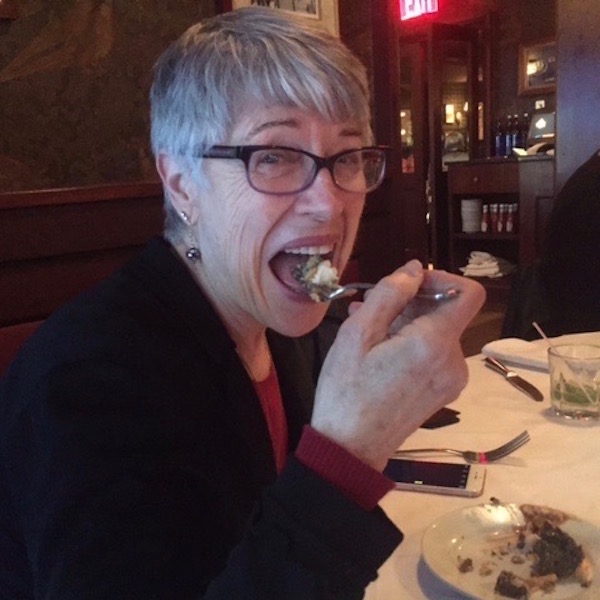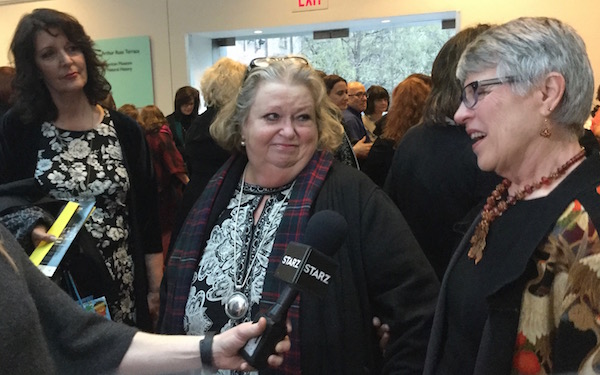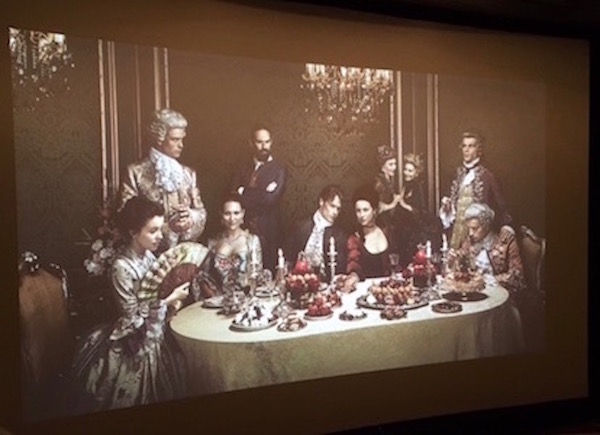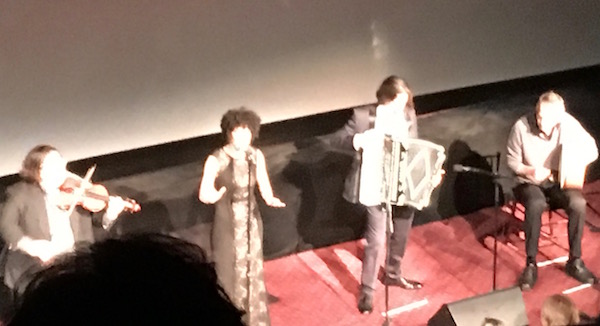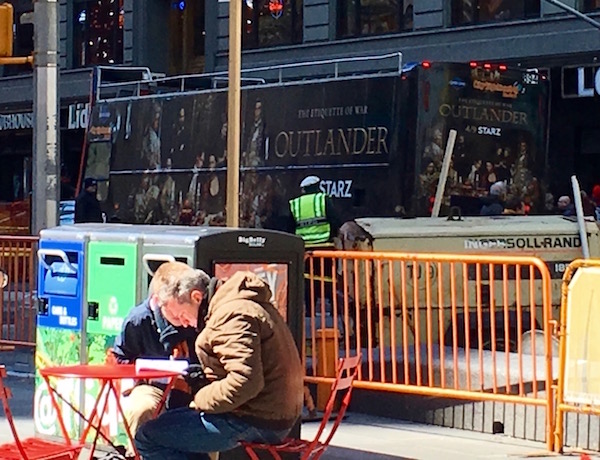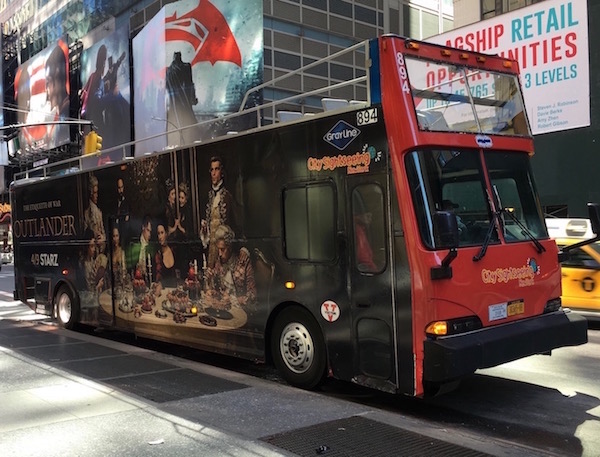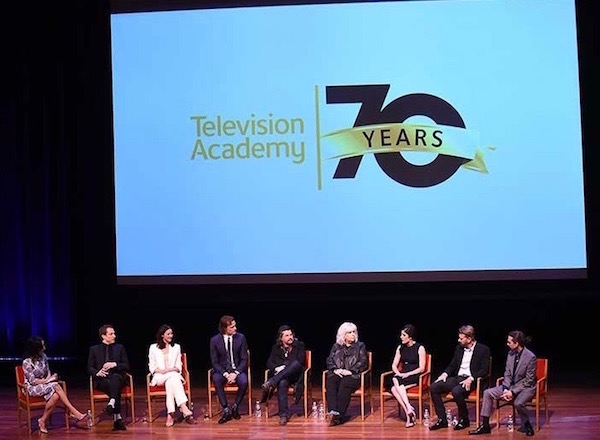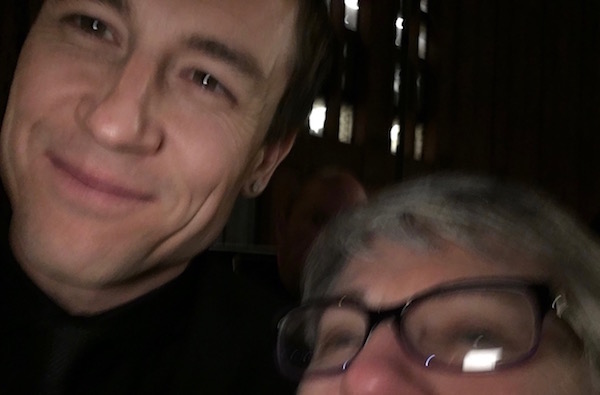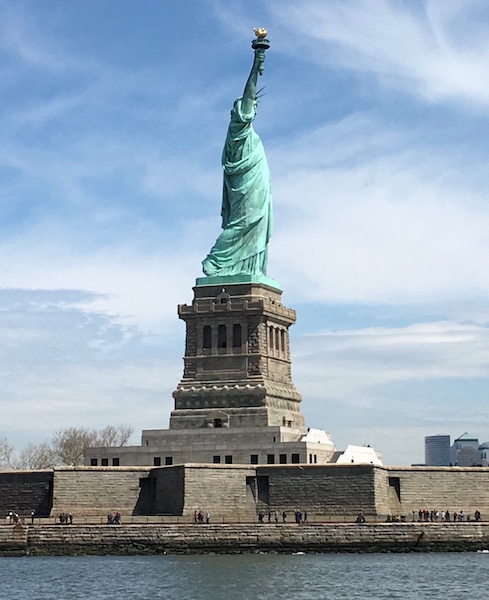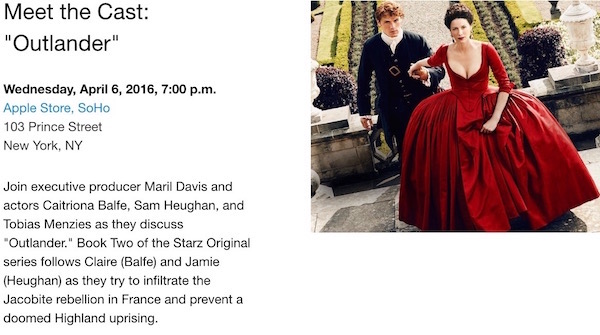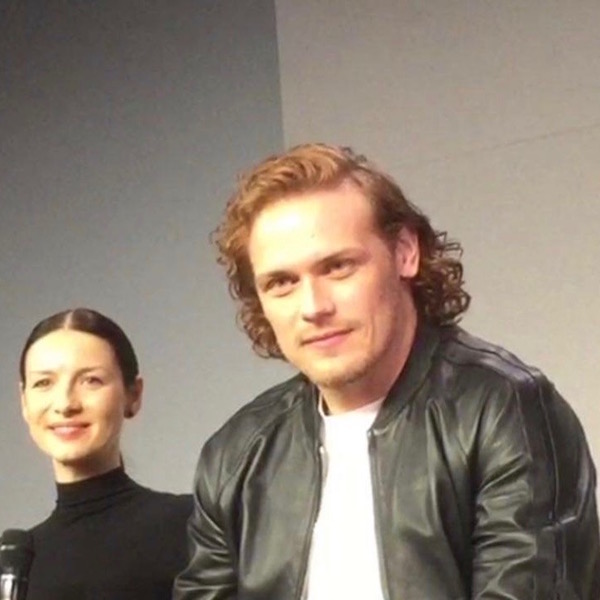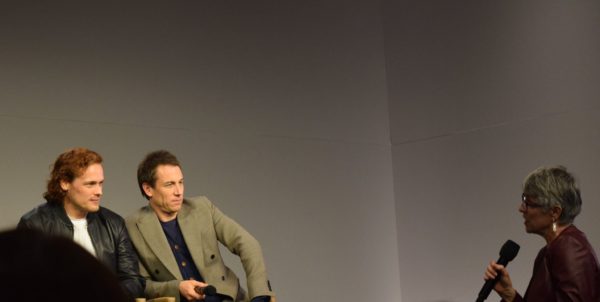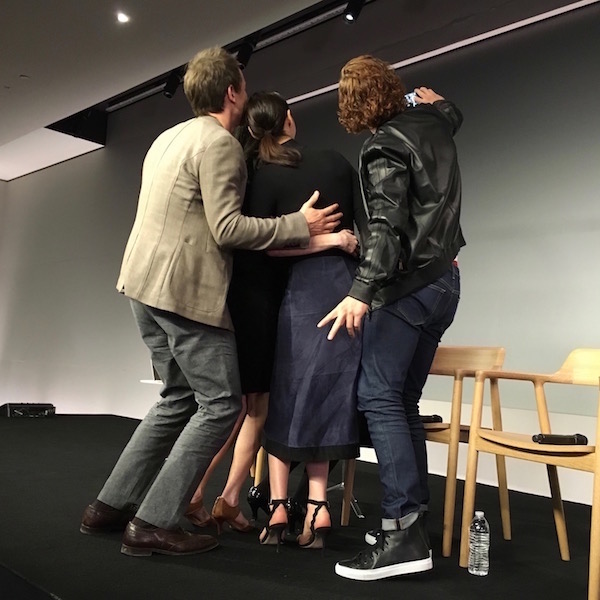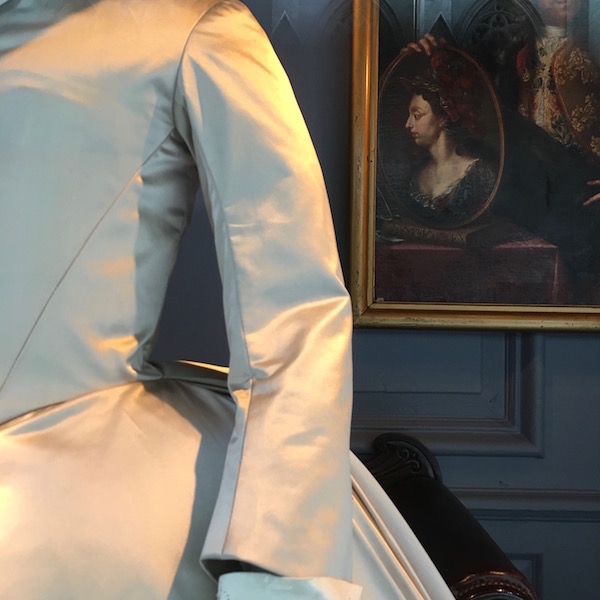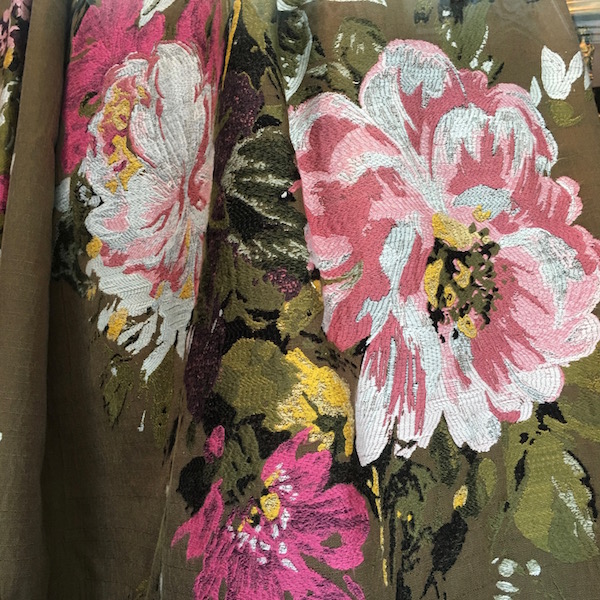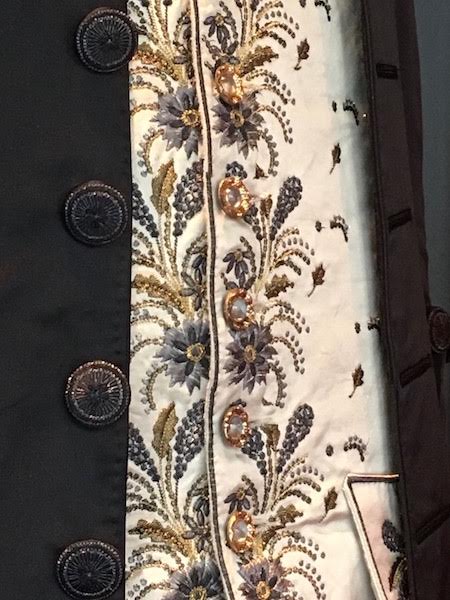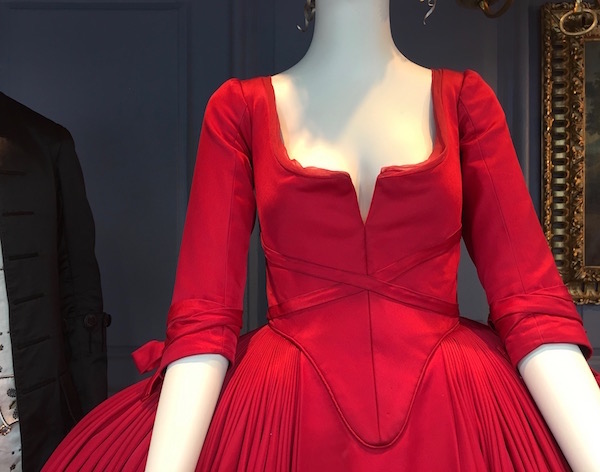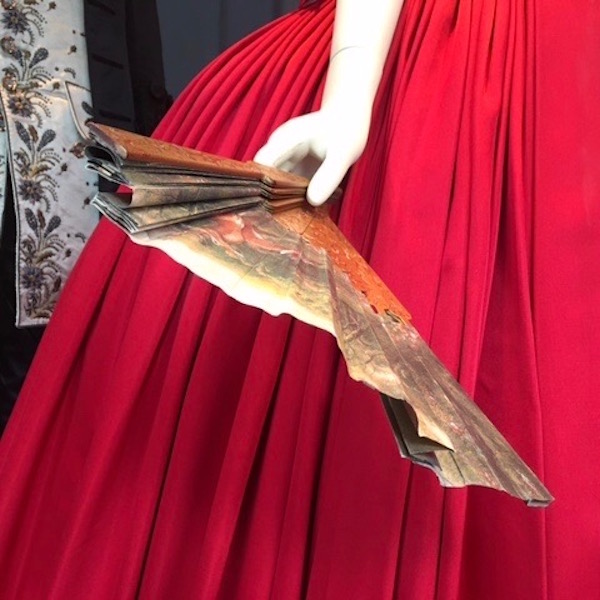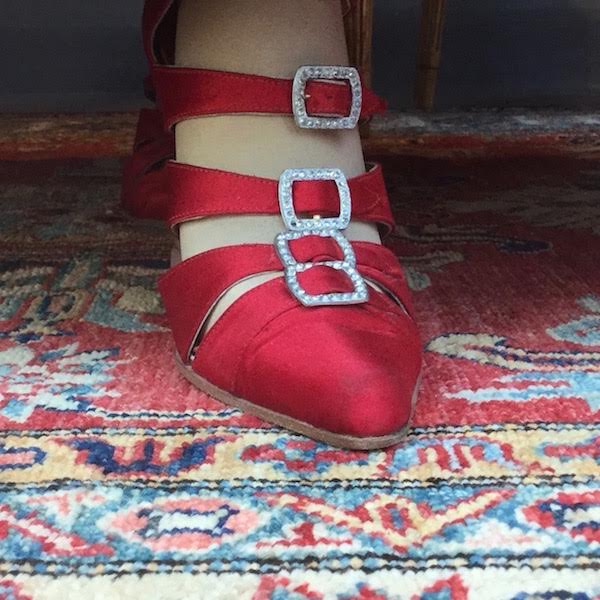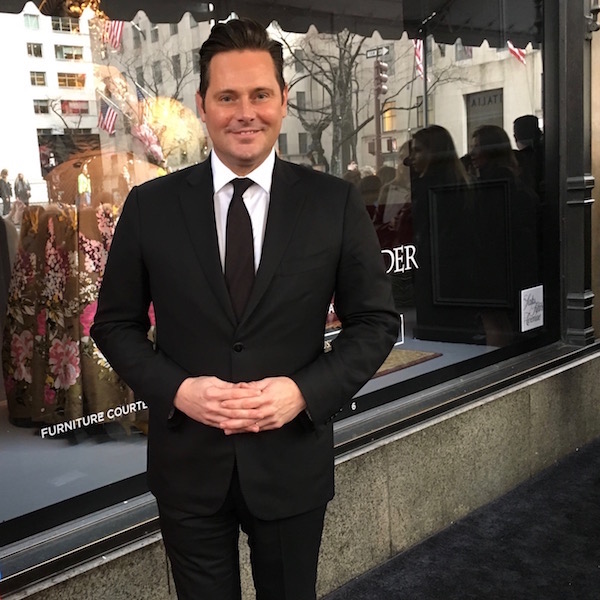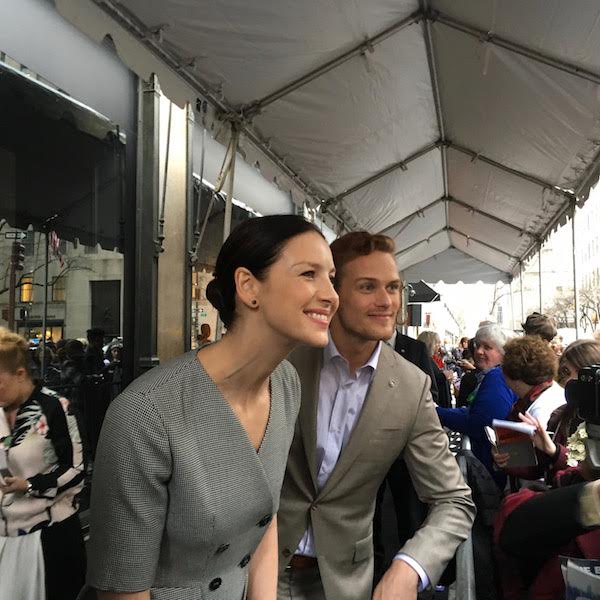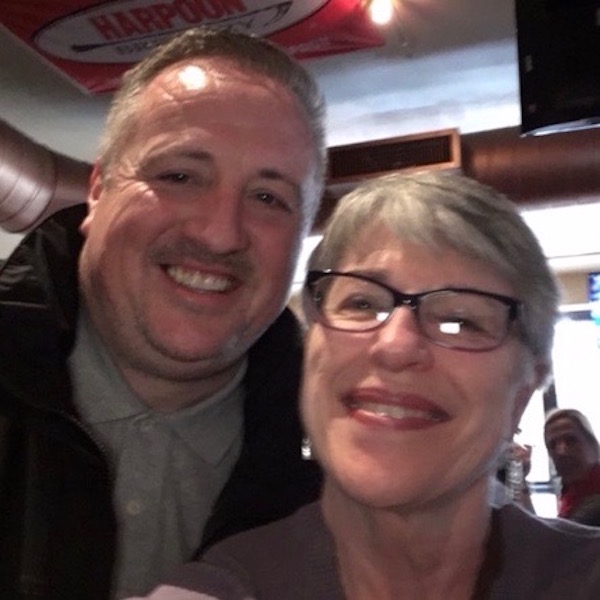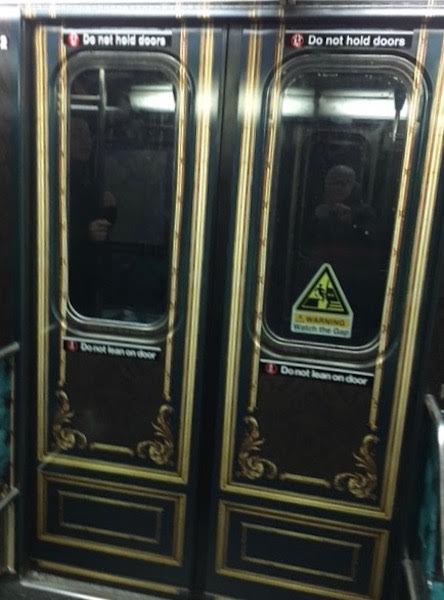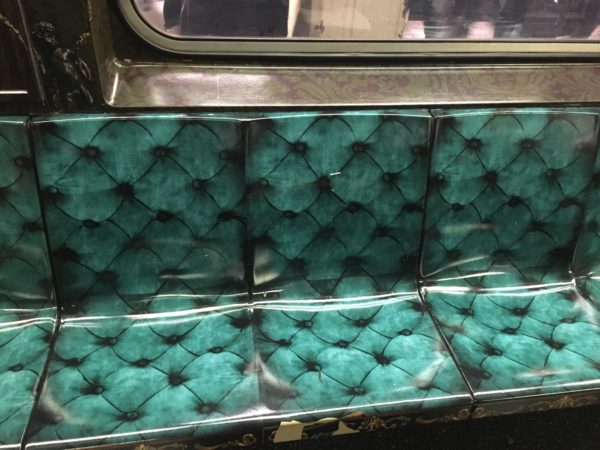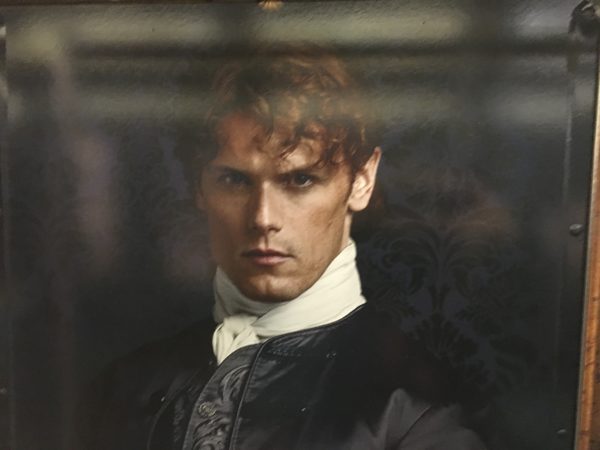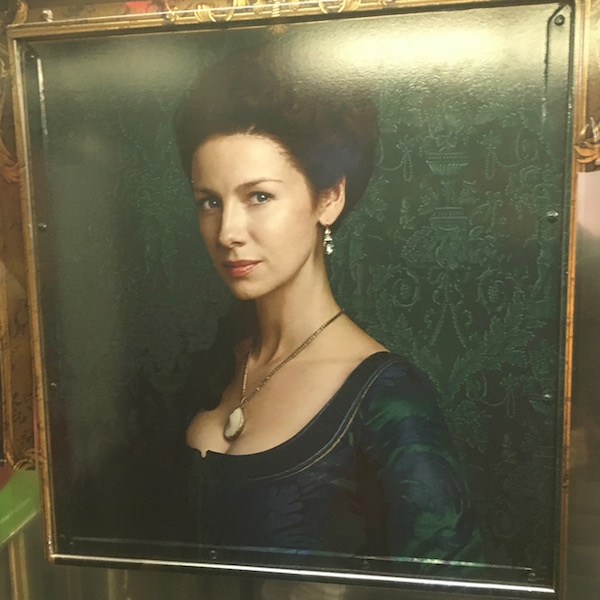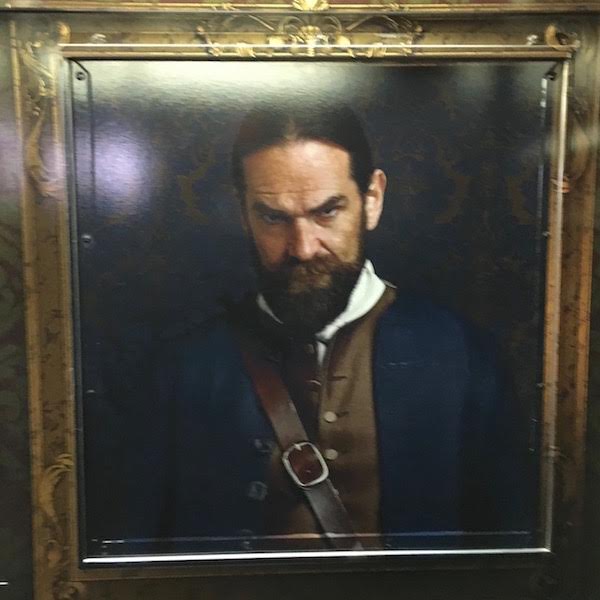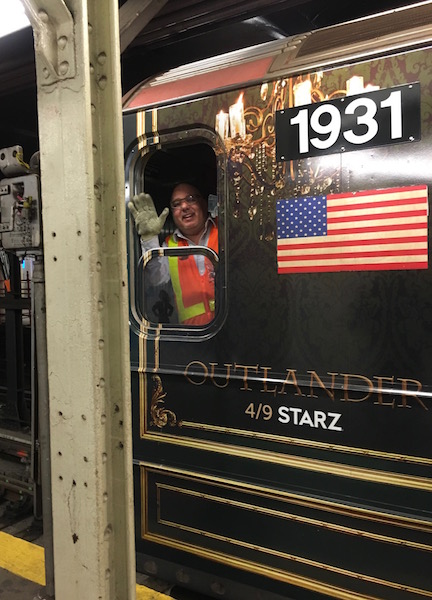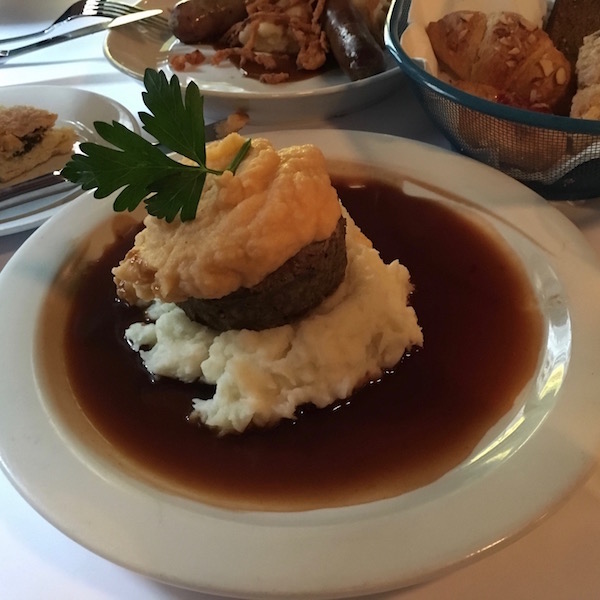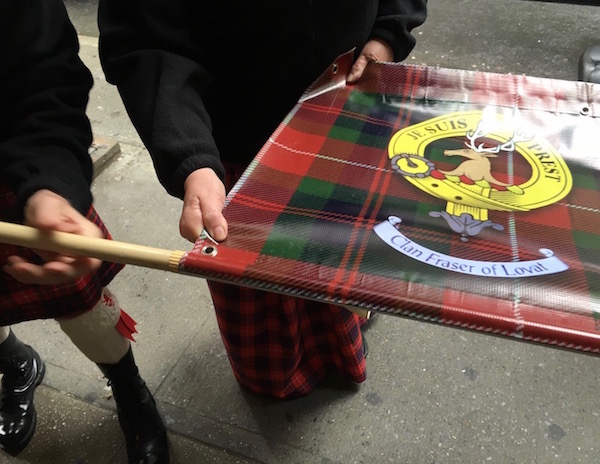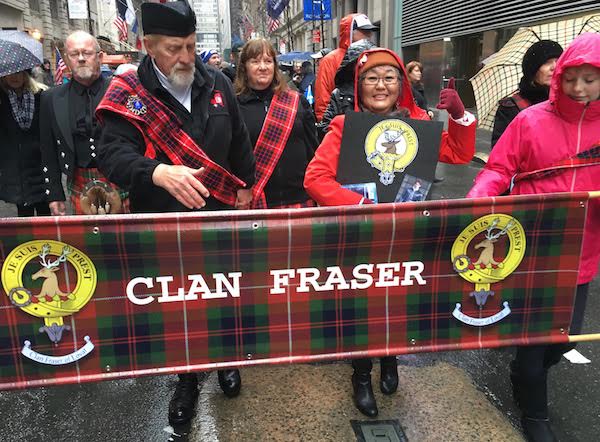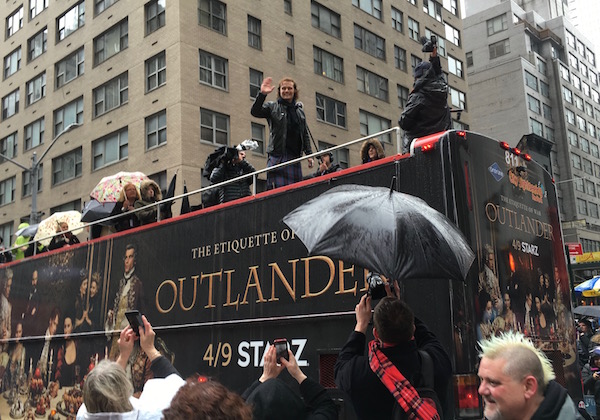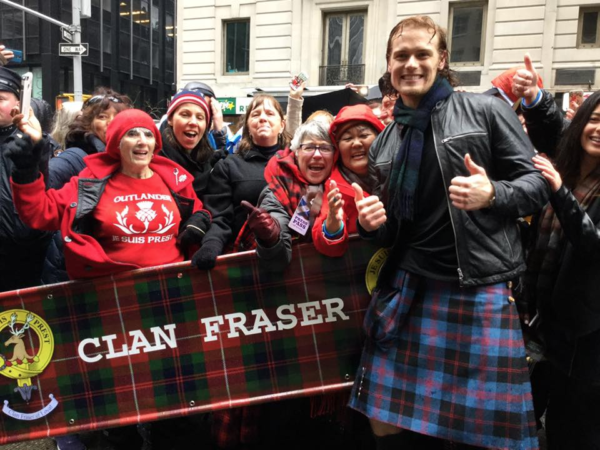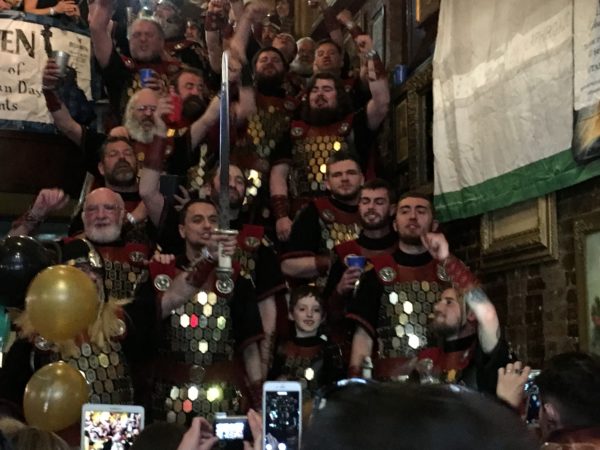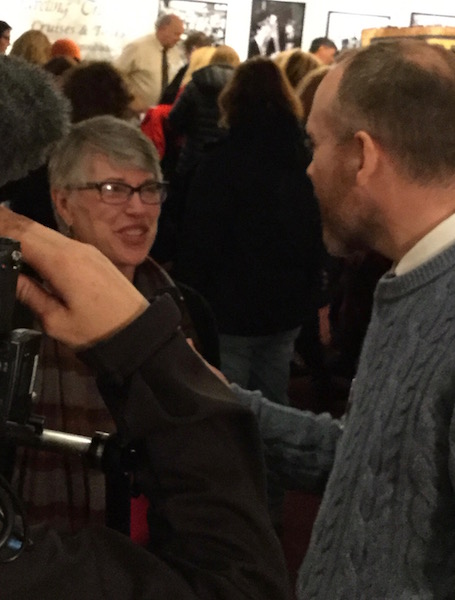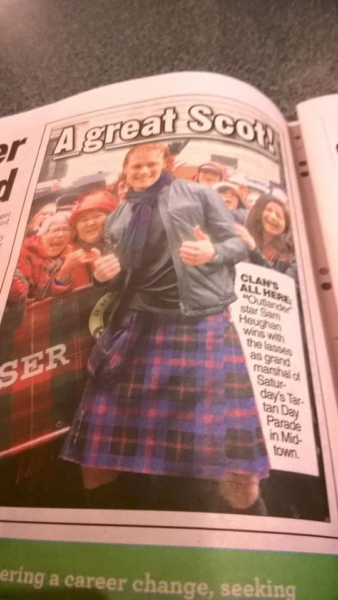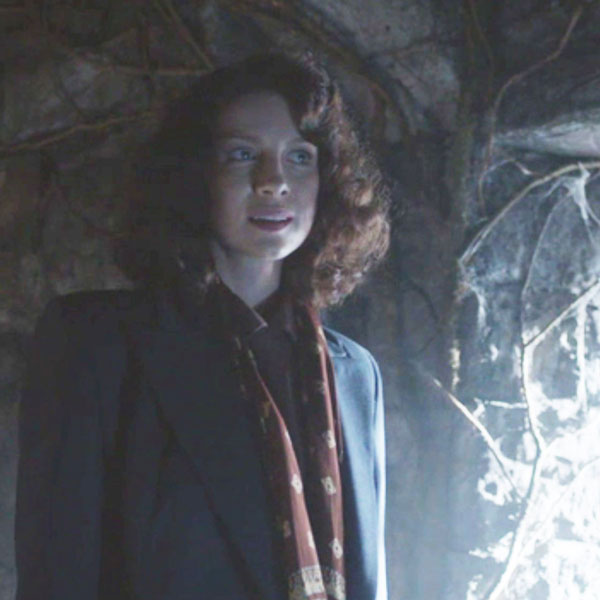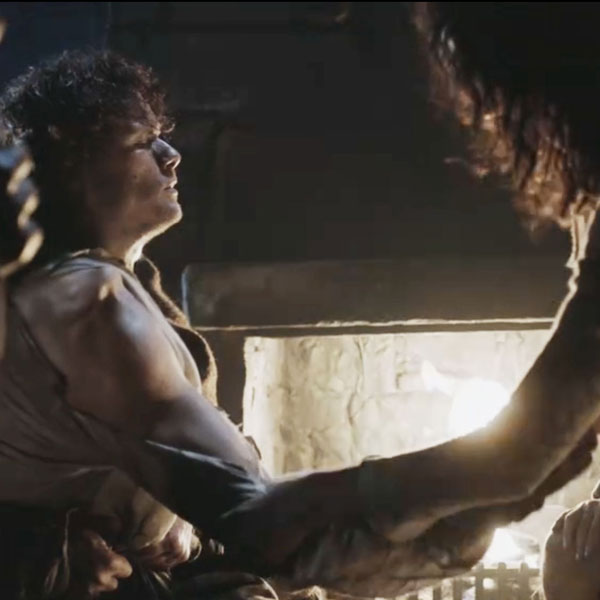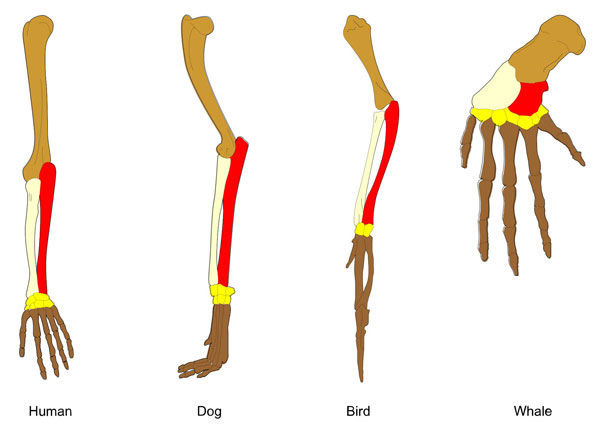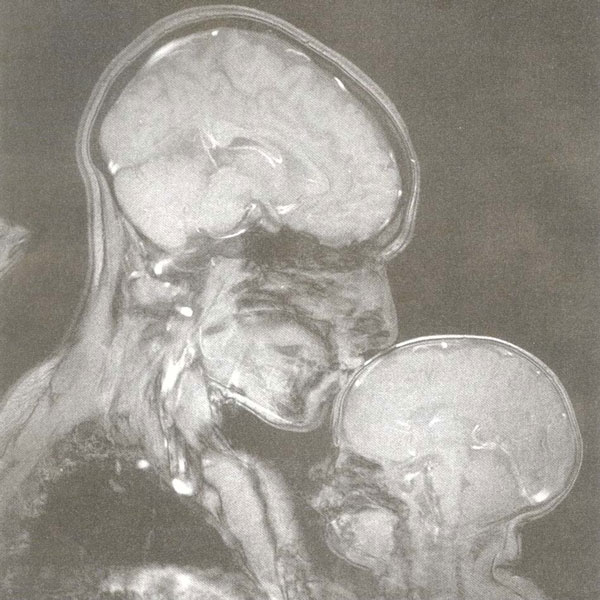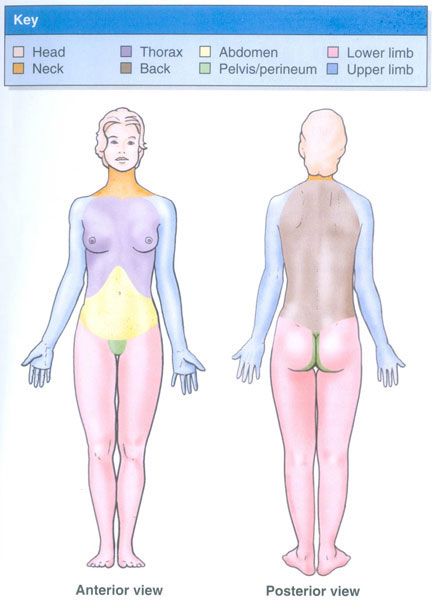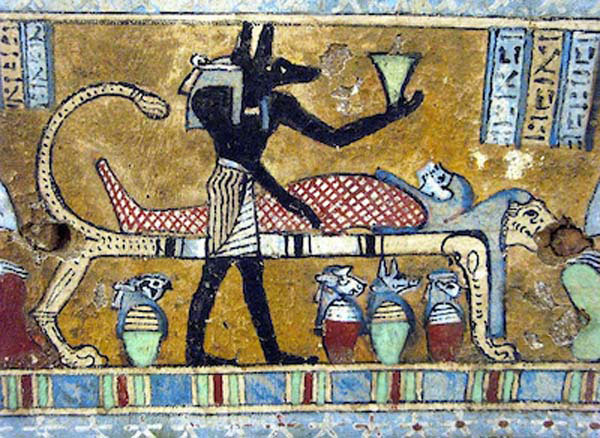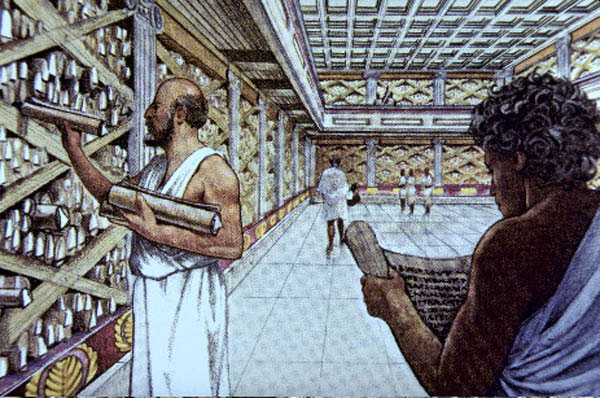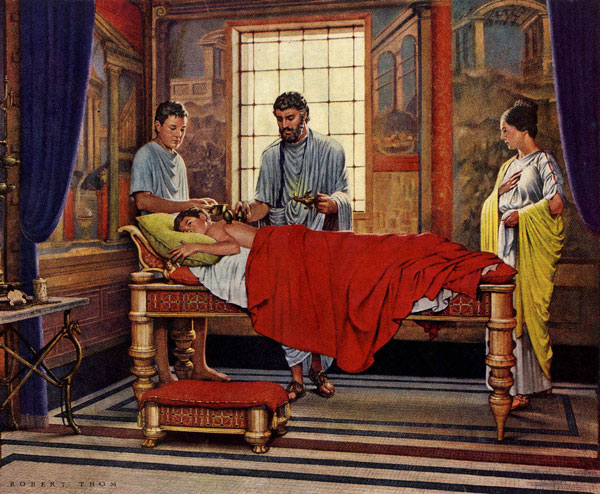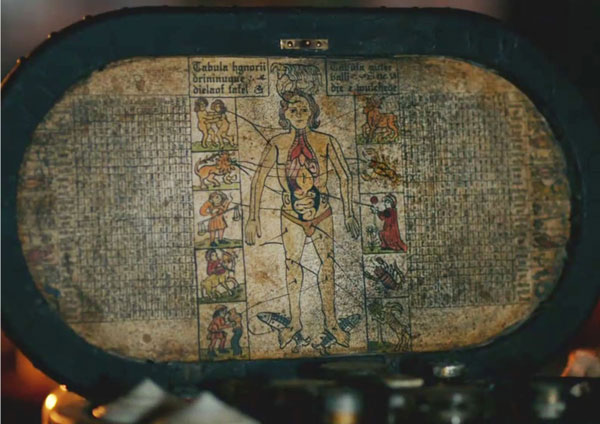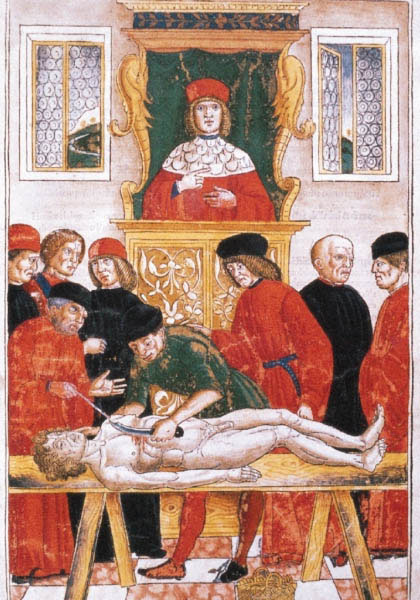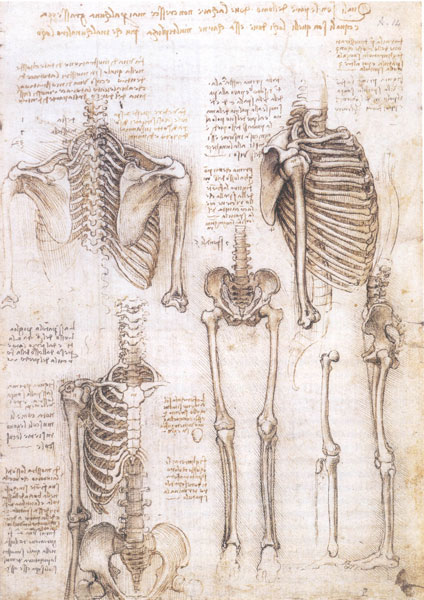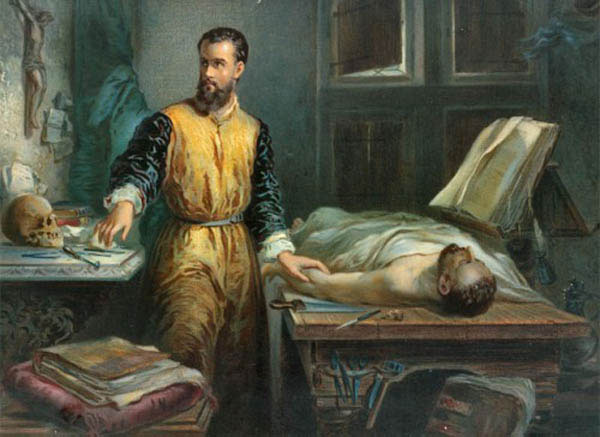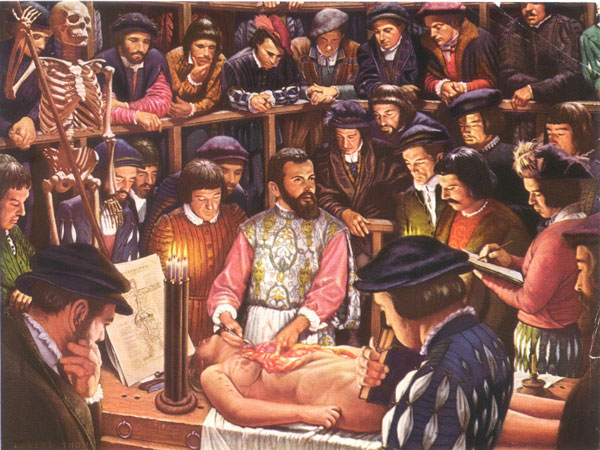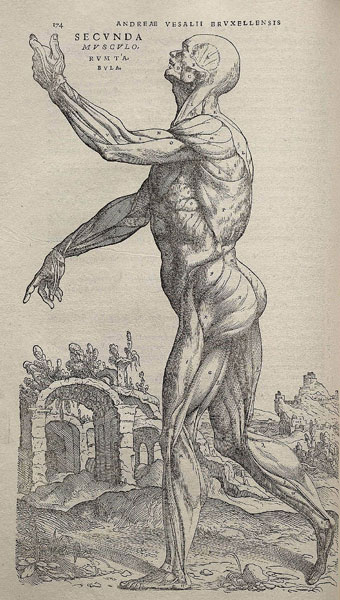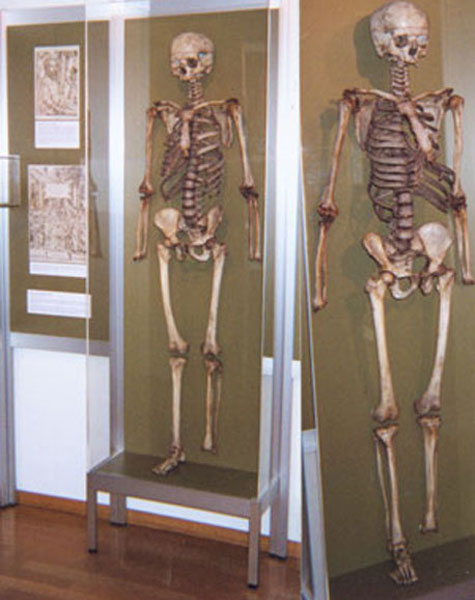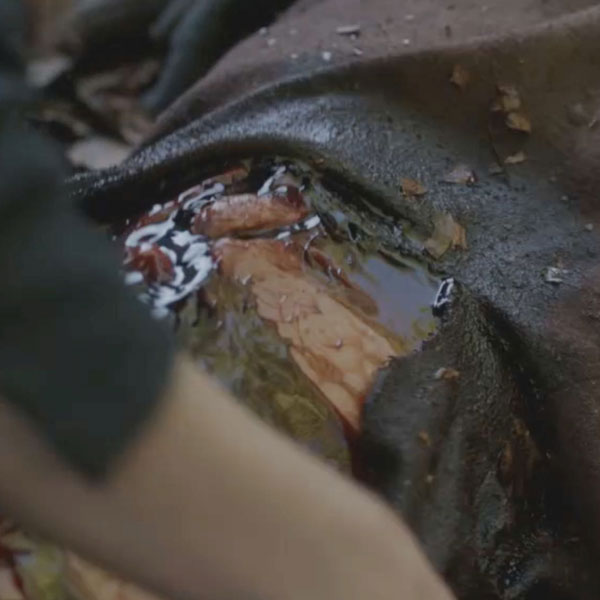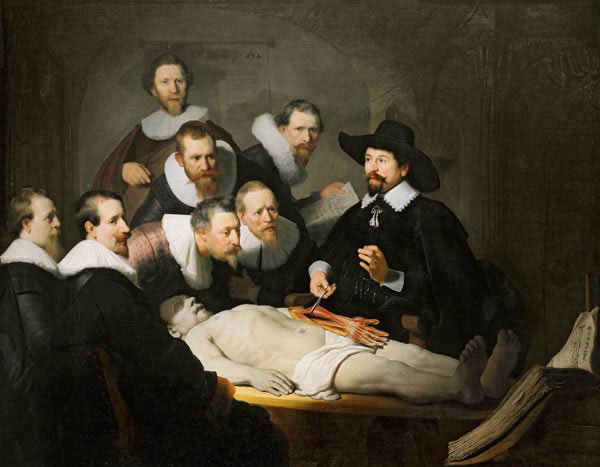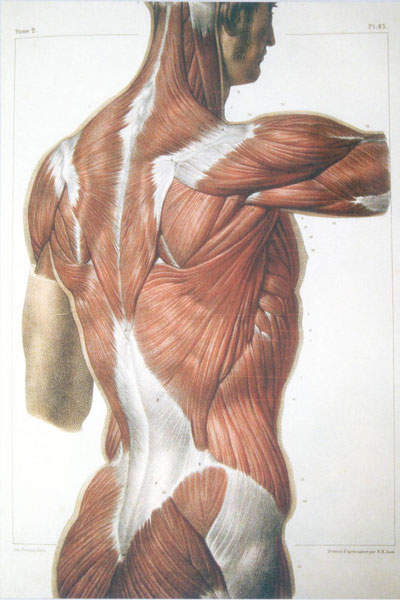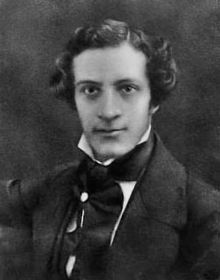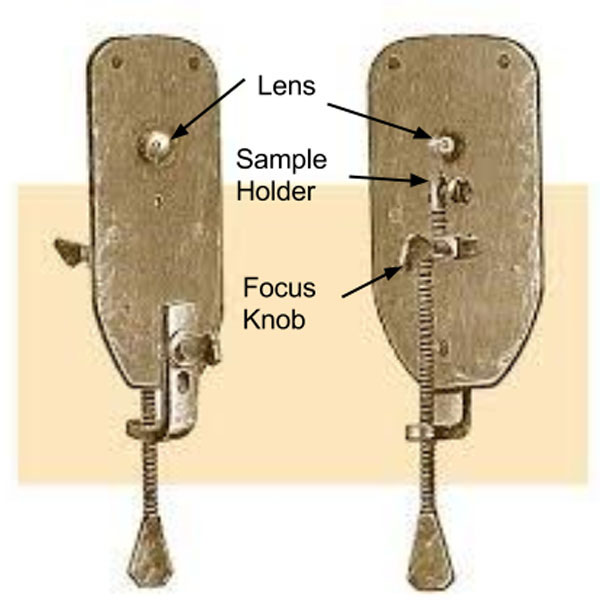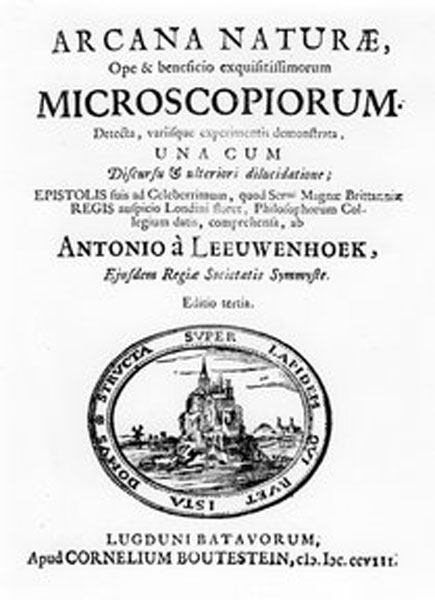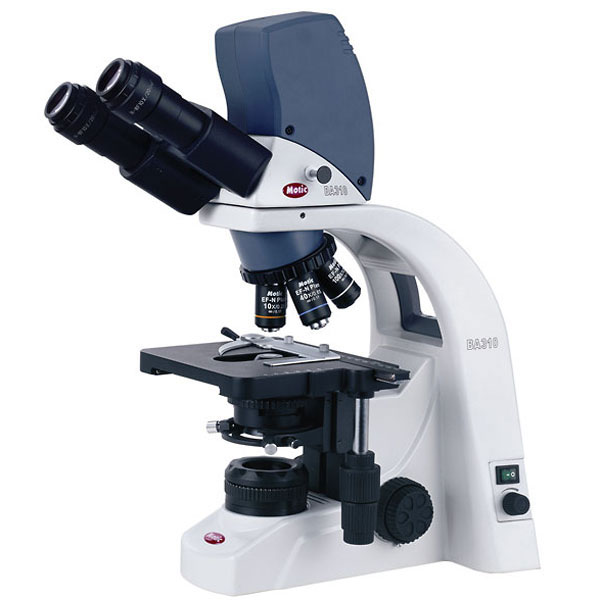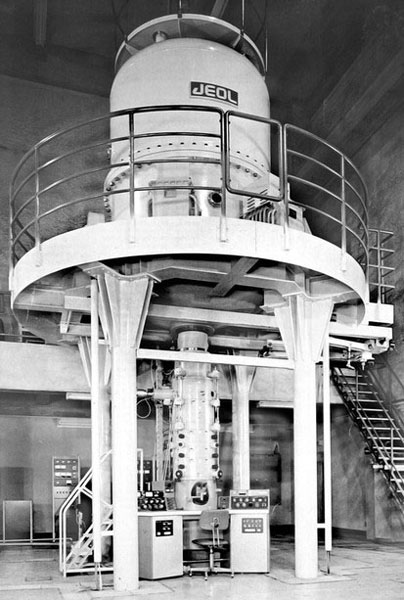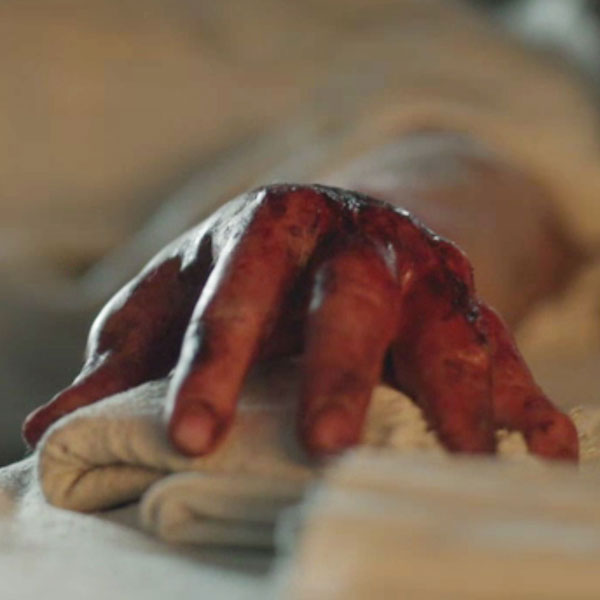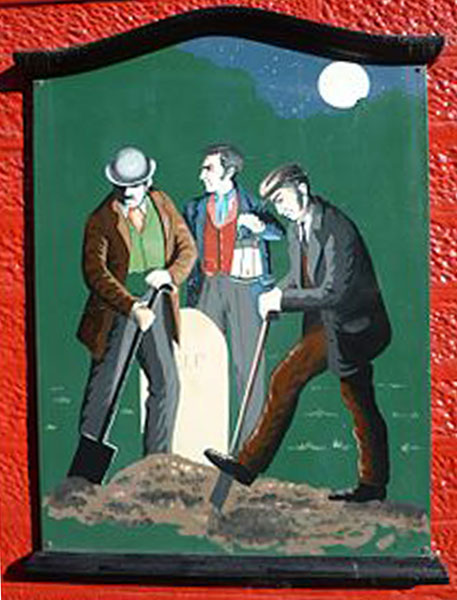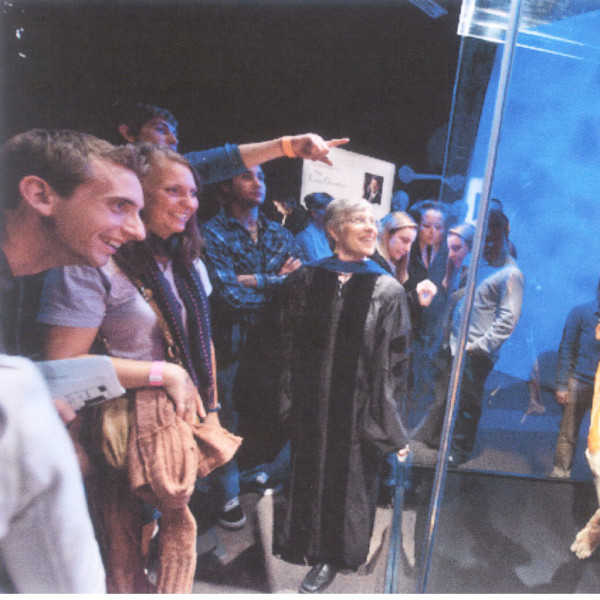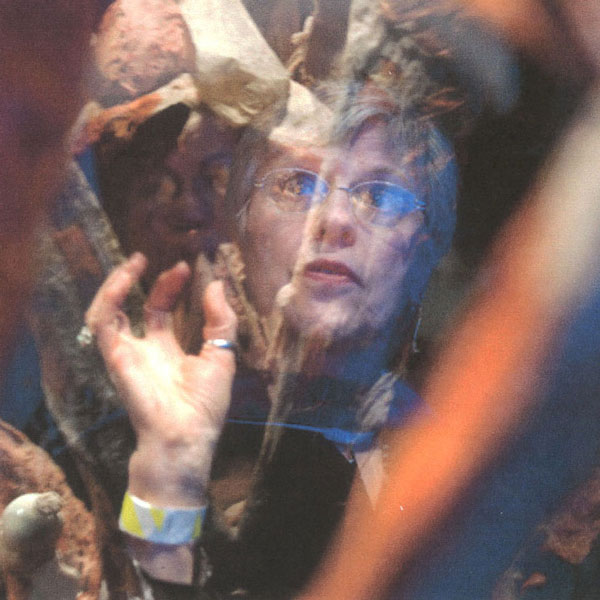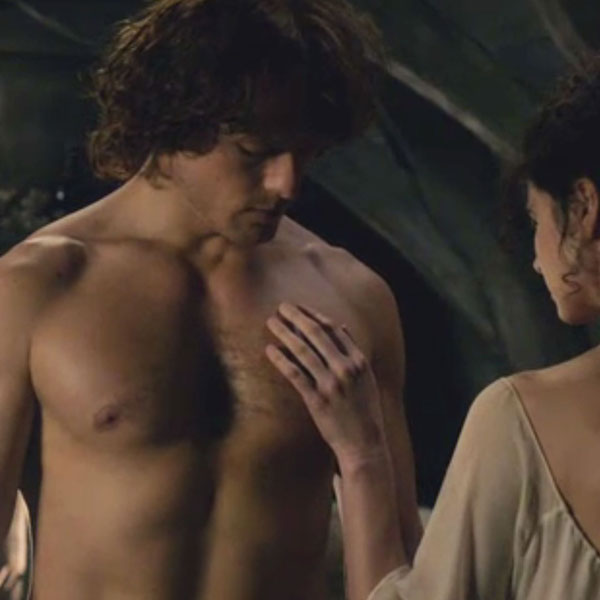Hi, anatomy students! So great to meet with you again. Today’s Anatomy Lesson #43 uncovers (ha) the posterior (back) thigh. We already met the anterior thigh waaaay back in Anatomy Lesson #7, “Jamie’s Thighs or Ode to Joy!” where we studied the quadraceps. Thus, we have much more to learn about the thigh.
Our object is to study muscles of the posterior thigh with two other thigh muscles thrown in for good measure. Some folks don’t find muscles all that compelling (unless they are Jamie’s, of course!); mayhap this lesson will change their minds. Anatomical tidbits are added to hold your attention.
As always, Outlander books and Starz episodes are blatantly scattered throughout. Let’s start with a great view of Jamie’s posterior thighs (Starz episode 112, Lallybroch). Och! Lad, best tuck in those flapping shirt tails! Oops, nothing to tuck into. Where’s a kilt when you need one?
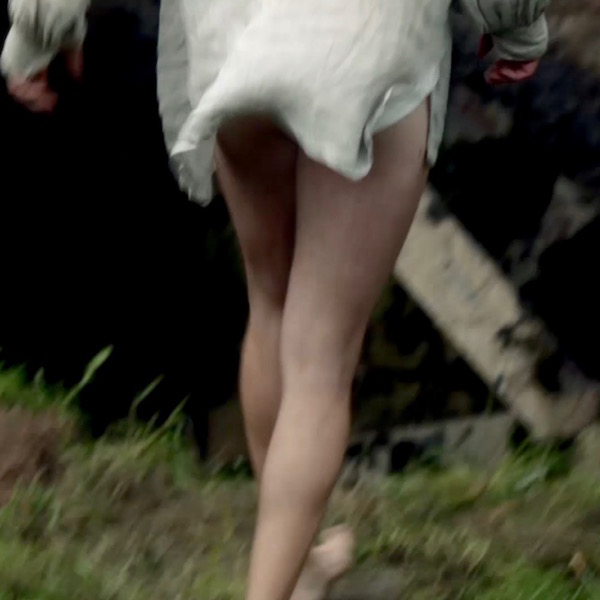
Ah, there’s that plaid (Starz episode 109, The Reckoning). Gird up your loins, Jamie! Hee, hee.
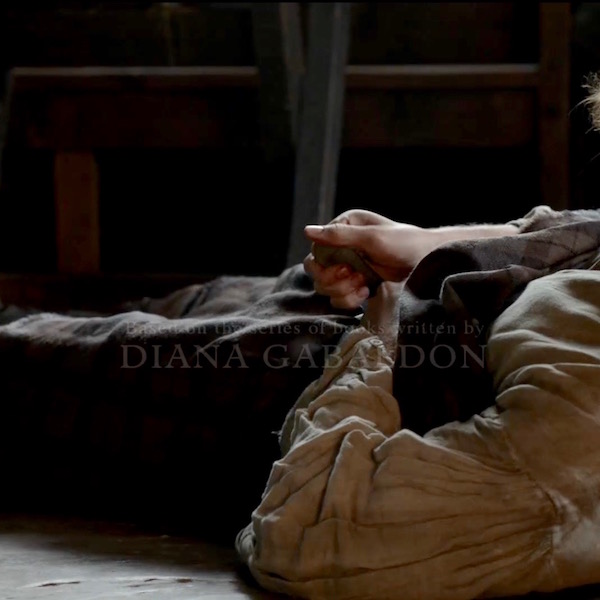
Lower Extremity: This lesson starts with essential definitions. Anatomists define the lower limb or lower extremity as the appendage from hip joint through toes. Folks (including me, at times) refer to the lower extremity as the upper leg and lower leg but, in anatomy, this is not so. The thigh is that part of the lower limb between hip and knee joints (Image A – between dashed lines). The leg lies between knee and ankle joints and the foot is distal to (beyond) the ankle joint.
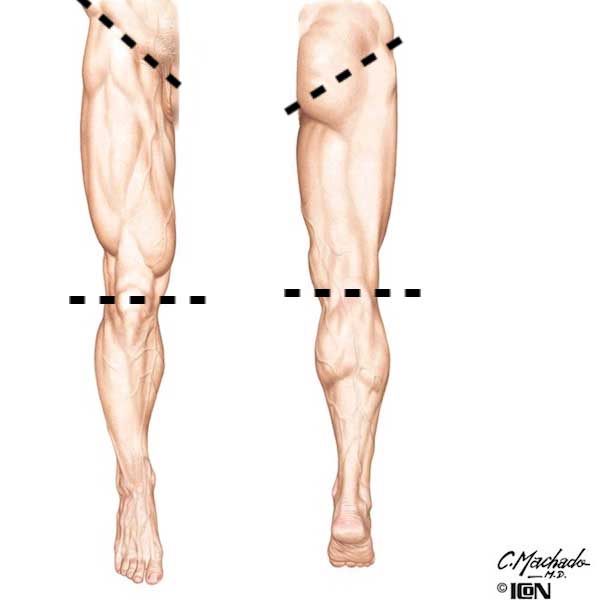
Image A
Thigh Overview: Today’s lesson focuses on posterior thigh so let’s define this area. The human thigh is divided into compartments based on connective tissue septa (partitions) and actions; these are best visualized in cross-section (Image B). By convention, cross-sections are interpreted is as if you stand at a person’s feet and look toward the head.
A plane crossing the femur, reveals three compartments, each bearing different muscle groups: anterior (Image B – red), medial (Image B – pink; OK, OK – it’s dusty rose!) and posterior (Image B – lavender). Anterior means front; medial means toward the midline; posterior means back. We will study three muscles of the posterior compartment, one of the anterior and one of the medial.
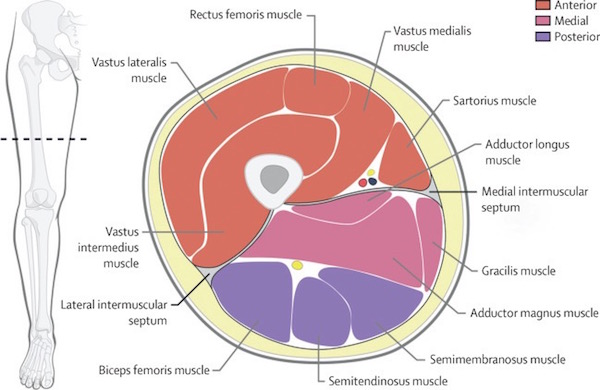
Image B
Posterior Thigh Muscles: Three muscles make up the posterior thigh compartment; all are typically long and strong.
- Semitendinosus
- Semimembranosus
- Biceps femoris
Try This: Open the space between thumb and forefinger and grip your posterior thigh about mid-femur. Your entire hand should grasp a sturdy muscle mass containing the three posterior compartment muscles. Appreciate the same anatomy with your other thigh or someone else’s. <g>
Topographical Anatomy: Looking at topography or surface anatomy of an intact posterior thigh, is it possible to see grooves and ridges created by its muscles? Yes, if the subcutaneous fat layer is not too thick and if the thigh is well-muscled. Posterior thigh (Image C – right lower extremity) bears three muscles in succession: Blue arrow marks semimembranosus, red arrow marks semitendinosus and green arrow shows biceps femoris.
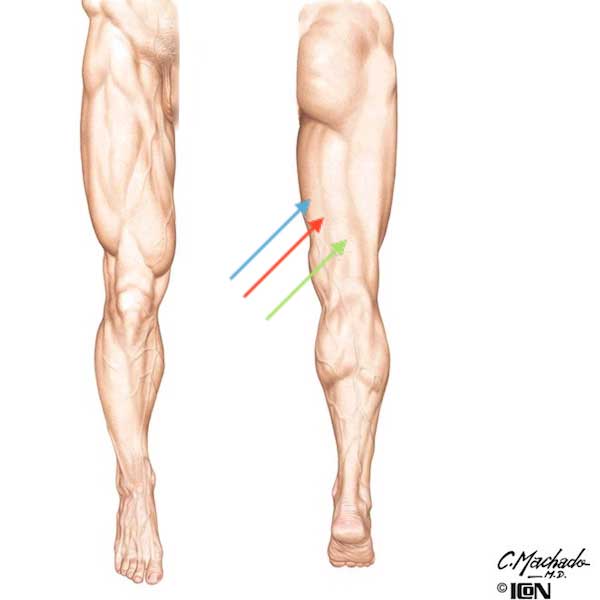
Image C
Not easy to see? OK, let’s look again using a male body builder (Image D). He is not mooning us, rather, he demonstrates posterior muscles of the lower extremity. Same color coding as Image C and not a challenge to recognize the long columns of posterior thigh muscles. Impressive!
Understand that semitendinosus (red arrow) and semimembranosus (blue arrow) fill the medial (inner) side of posterior thigh and biceps femoris (green arrow) occupies the lateral (outer) side.
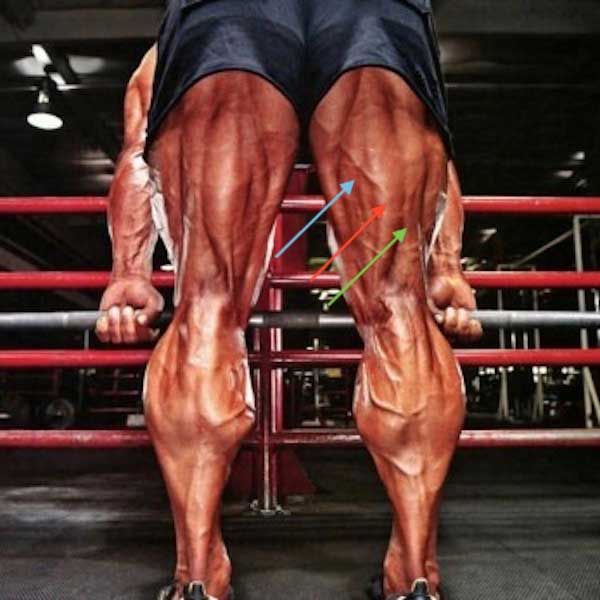
Image D
Book Quote: Speaking of long columns of thigh muscles, Diana obligingly (yay!) provides a description of Jamie’s own fine muscular columns, here from Dragonfly in Amber. In case you don’t recognize the scene, these are Claire’s poignant thoughts the eve before she passes through the stones (sob!), back to Frank (gah!). Dinna ken if “seasoned oakwood in the columns of his thighs” refers to anterior or posterior thigh muscles but, knowing Claire, it was very likely both. Snort!
I touched each soft hollow, the hidden places of his body. Felt the grace and the strength of each curving bone, the marvel of his firm-knit muscles, drawn lean and flexible across the span of his shoulders, smooth and solid down the length of his back, hard as seasoned oakwood in the columns of his thighs.
Book quote and photo (Starz episode 204, La Dame Blanche) aren’t a match, but will do in a pinch…the pinch being a love bite on Jamie’s thigh. Man, you are in BIG trubble! Yep, seasoned oakwood it is. Ha, ha!
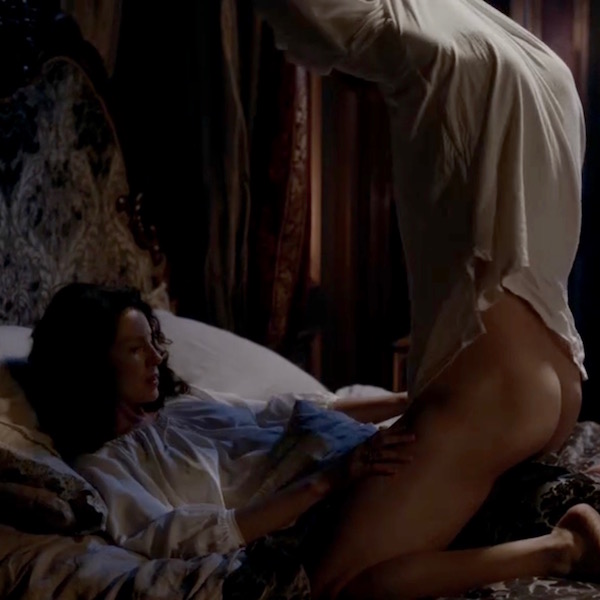
Remove the skin and, voila, three posterior thigh muscles pop into view (Image E – posterior right thigh).
Semitendinosus: Superficial semitendinosus courses down the medial side of posterior thigh. The muscular part ends roughly midway down the femur, transforming into a long, round tendon and curving behind the knee joint to end in the tibia. Did you know, part of semitendinosus tendon can be harvested during knee reconstructions to replace the ACL or anterior cruciate ligament (Anatomy Lesson #7, “Jamie’s Thighs” or “Ode to Joy!”)? Yep, a very useful muscle.
Semimembranosus: Semimembranosus (Image E) is a broad, flat muscle so named because it has an unusually membranous tendon of origin. Although it lies deep to semitendinosus, it is the most medial of the posterior thigh muscles. Semimembranous also drops across the knee joint to end in tibia. Semimembranosus is variable; it may be reduced, enlarged, duplicated or absent.
Biceps Femoris: Longtime students will ken that we studied biceps brachii back in Anatomy Lesson #20, “Arms! Arms! Arms! – Redux.” Well, like the arm, posterior thigh also has a biceps muscle, biceps femoris. Biceps derives from Latin, meaning two heads and femoris reflects its close association with femur. Indeed, biceps femoris (Image E) does have two heads of origin: the long head courses the length of the thigh and the short head is roughly half as long. Both muscle parts unite as a single tendon ending in the fibula. The short head of b. femoris may be absent but otherwise, the muscle demonstrates few variations.
Clinical Correlation: Recently, a professional soccer player suffered major posterior thigh pain. Imaging revealed a large, anomalous (duplicated?) right semimembranosus which was crossed over and compressed by the tendon of semitendinosus. This unusual anatomy created what is known as entrapment syndrome of the posterior thigh, which compresses the popliteal artery (see below) restricting blood flow. This is especially acute during exercise and hence, pain. Muscles object when deprived of oxygen….. “blood of my blood.” We know the drill.
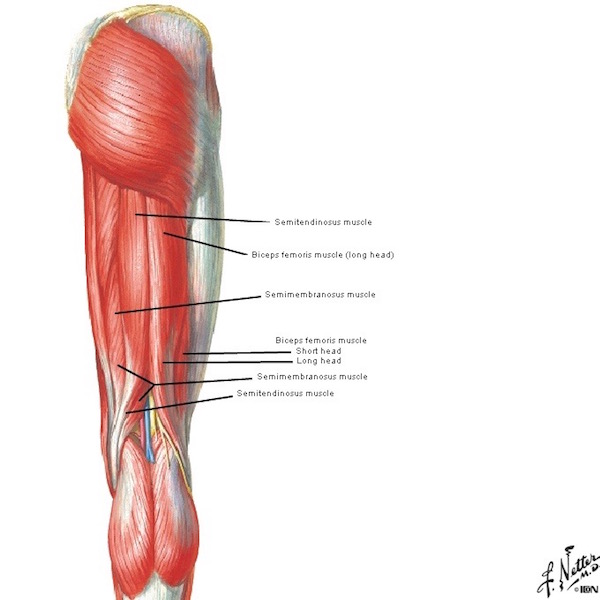
Image E
Remove gluteus maximus and posterior thigh muscles spring into view (Image F). Remove semitendinosus and long lead of b. femoris and, ta da, semimembranosus and short head of b. femoris say hello! Image F reveals the long, flat membranous tendon of origin for semimembranosus. Short head of b. femoris arises from lower half of femur.
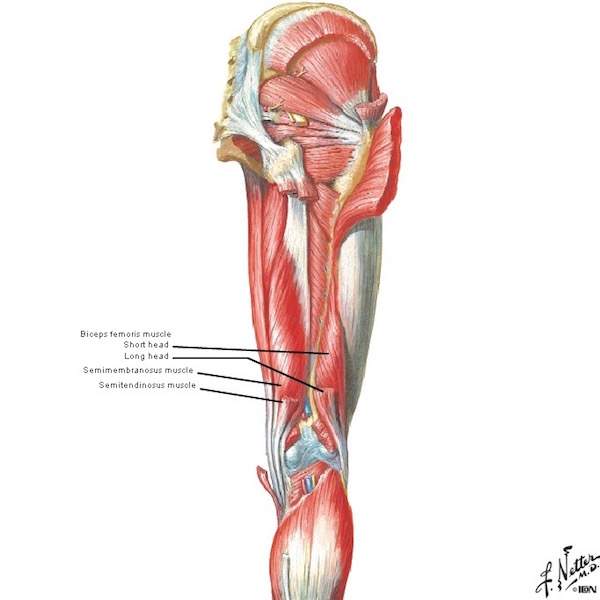
Image F
Moment of Silence, please!: In Image E, the tops of posterior thigh muscles are not visible because gluteus maximus covers them. G. maximus is a large, flat quadrangular-shaped muscle honored in Anatomy Lesson #1, “Jamie’s Tush” and was the original inspiration for Outlander Anatomy lessons! Thus, it is only fitting that we interrupt this lesson to pay homage to lovely body curves created by these, the body’s most massive muscles (Starz, episode 107, The Wedding). Gasp, thud!
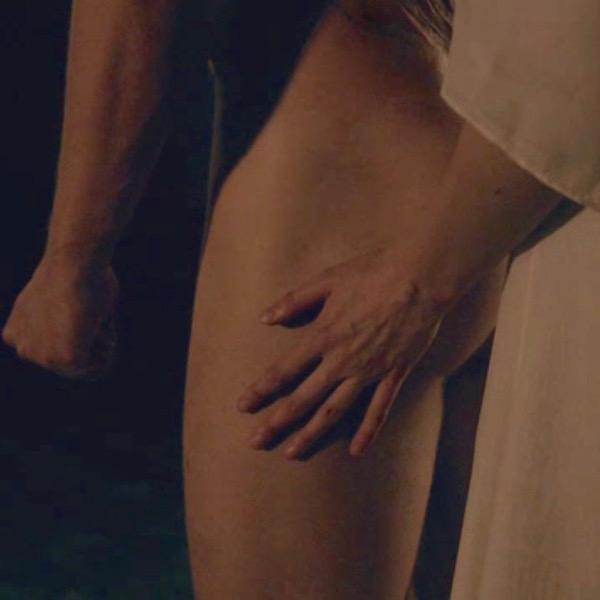
Muscle Attachments: Next, let’s suss out bony attachments of the posterior thigh muscles – know these and muscle actions make sense. Image G of the posterior hip bone and femur is busy but nicely shows muscle origins (red) and insertions (blue). Origin means the body site (almost always a bone) giving rise to a muscle. Insertion means the site where the muscle ends by attaching to a different bone. Muscles usually cross one or more joints (there are exceptions) – a site where bones meet to allow for movement. Make sense? Dandy! Succinctly put:
- Origin:
- Proximal (nearer the body center)
- Fixed point (least moveable site)
- Insertion:
- Distal (further from the body center)
- Movable (moves with muscle contraction)
Origins and Insertions: Long head of biceps femoris, semitendinosus, and semimembranosus, all take origin from the ischial tuberosity (Image G) of the respective hip bone, cross the hip joint and pass down the posterior thigh. As noted, the short head of b. femoris takes origin from the lower half of femur (Image G). BTW, the sturdy ischial tuberosities are known at gyms as “sits bones” and, indeed, we do sit on them!
After coursing down the posterior thigh, each muscle claims a different insertion site.
Semimembranosus crosses knee joint to end in medial tibia (Image G – inner leg bone).
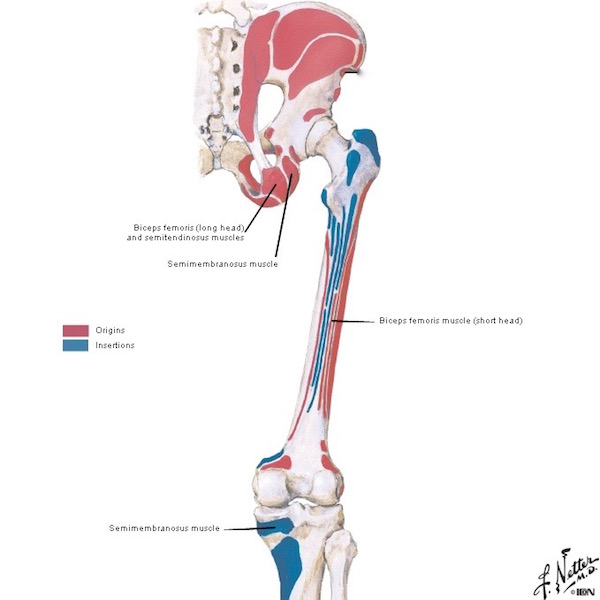
Image G
The tendon of semitendinosus swings behind the knee joint and inserts into anteromedial (front/inner) surface of tibia (Image H).
Long and shorts heads of biceps femoris unite as a single tendon which crosses the knee joint to end in the head of fibula (outer leg bone) Image H.
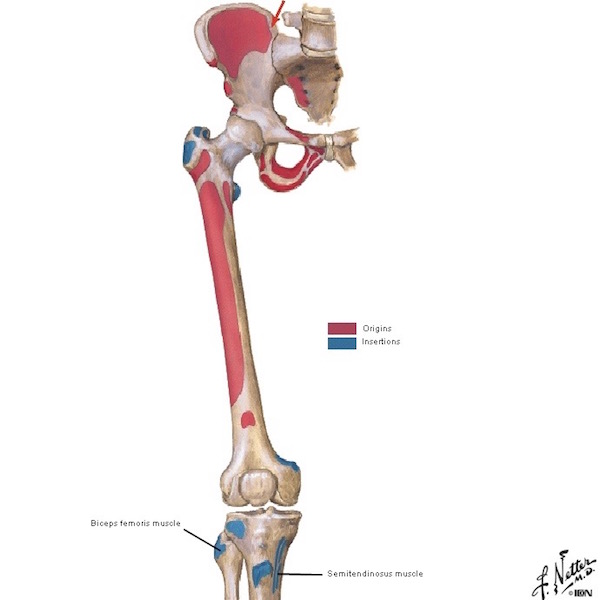
Image H
Actions: Now for the nitty-gritty: What actions do these muscles perform? Well, they are critical for successful lower limb ambulation: walking, running, climbing, kicking, squatting, jumping, etc. Semitendinosus, semimembranosus and long head (not short head) of b. femoris cross the hip joint so as they contract, the hip joint extends or straightens (Image I – bottom right). All three muscles (including short head) cross the knee joint so as they contract, the knee flexes or bends (Image I – top right). All three muscles counteract forward bending at the hips to keep us from doing a face plant. Whew, busy muscles!
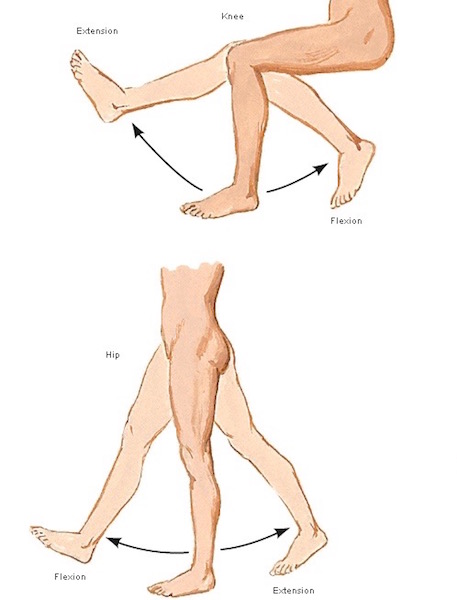
Image I
Hamstrings: Now, here’s an interesting tidbit: Anatomists call semitendinosus, semimembranosus and long head of b. femoris true hamstrings; “ham,” from Old English hom, meaning the hollow or bend of the knee and “string” referring to tendons located there. To receive this “anatomical blessing,” a posterior thigh muscle must meet the following criteria:
- Take origin from the ischial tuberosity (ergo, short head of b. femoris doesn’t quality)
- Cross the hip joint causing extension (short head of b. femoris doesn’t quality)
- Cross the knee joint causing flexion
- Same innervation (short head of b. femoris has a different innervation)
Hamstringing is an dreadful event wherein a victim is incapacitated by severing hamstring tendons at the back of the lower thigh (Image J – in cartoon form, thank goodness!). This laceration was crippling, painful and often caused death by exsanguination from severed vessels at back of the knee (see below). Hamstringing was a time-honored (eek!) method of permanently crippling animals and humans so they could not reengage in future warfare.
Hamstringing is a very old practice. Identified as houghing in the King James Version of the Bible, both Joshua and David ordered hamstringing of chariot horses. Carthaginians hamstrung their Roman enemies as did Germanic tribes. Romans hamstrung elephants and the practice has been revived most recently in Zimbabwe!
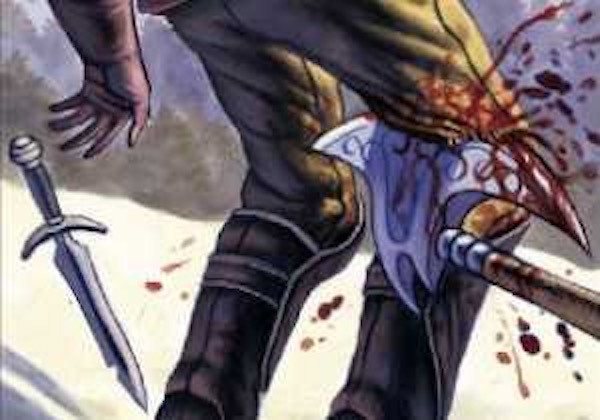
Image J
After he is stabbed in the torso by the mouthy MacDonald, Jamie doesn’t fail us! Pulling a dirk with his left hand, he prepares to strike his attacker (Starz episode 110, By the Pricking of My Thumbs). Who’s the cowering coward behind the tree? The Duke, of course. Off with his head!
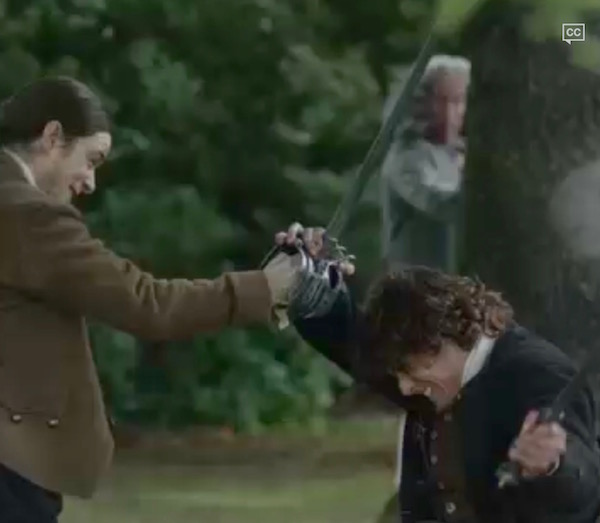
And, strike he does! Down goes MacDonald as Jamie’s blade slices into the unguarded right biceps femoris tendon, hamstringing his opponent. Given the state of 18th century medicine, this MacDonald willna be farming his croft. Ei, Ei, Ohhhhh….. Well, Jamie is a warrior – even if he is cute!
Try This: Want to feel your own hamstrings? Sit in a chair or on a sofa with knees bent and right foot turned outward. Place right fingers beneath outer right thigh (near knee). Pull right heel back against chair rung or couch base. Feel the tendon? This is biceps femoris. Relax and place fingers of left hand behind inner lower thigh, this time with turn foot inward. Pull heel back again. Feel two tendons? The superficial one belongs to semitendinsus and the deep is semimembranosus! A+ for you!
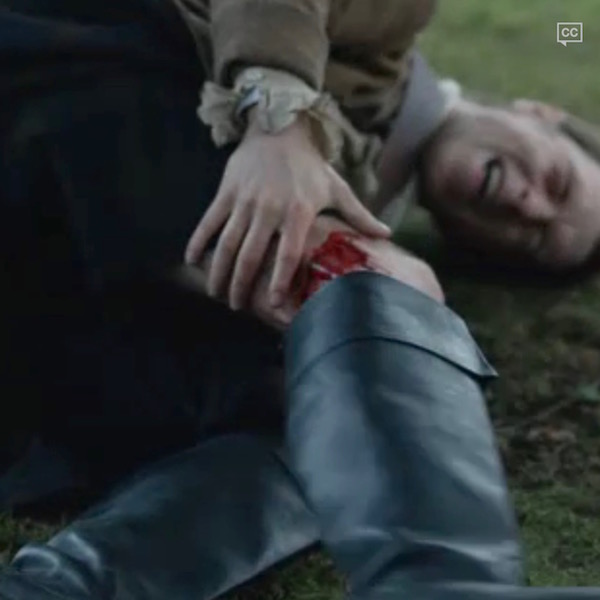
“Down by the old mill stream,” the tendon of Jamie’s right biceps femoris muscle is clearly visible as he shifts weight to the mill wheel. See the taut tendon behind his right knee? Oops, lost some of you! Please focus on the hamstring. Don’t see it? Bummer! <G>
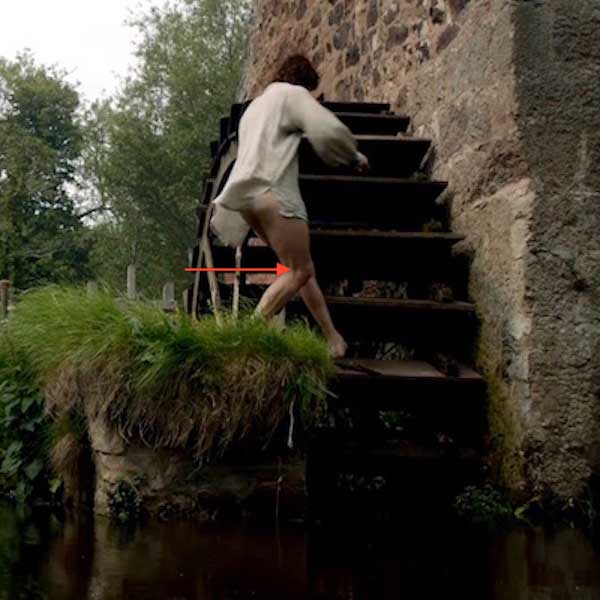
Let’s try again. How about both Jamie and Claire this time (Starz episode 101, Sassenach)? “Here’s to you lass, for tipping us to the villains in the rocks, and gieing us a wee bit of fun,” boasts and toasts Rupert. Green arrows mark tendons of biceps femoris muscles. Can you spy a second band of taut tissue, just forward of Jamie’s biceps tendon? This is the iliotibial tract or IT band (orange arrow – Anatomy Lesson #7, “Jamie’s Thighs or Ode to Joy!”). Yep, keep your eyes peeled for all sorts of Outlander anatomy!
BOOK QUOTE: Both Claire and Jamie have something to say about rubbing thighs during that intimate ride together, although Claire’s is slightly more high-brow. From Outlander book:
My companion seemed to be having little trouble, in spite of being unable to use this right hand. I could feel his thighs behind mine, shifting and pressing occasionally to guide the horse. I clutched the edge of the short saddle in order to stay seated; I had been on horses before, but was by no means the horseman this Jamie was….
but then that ride through the dark together – with that lovely broad arse wedged between my thighs…with a bum like that… What does it matter if she’s a f-face like a ah-ah- sheep?”
Baa, baa, bleats Claire! 🙂
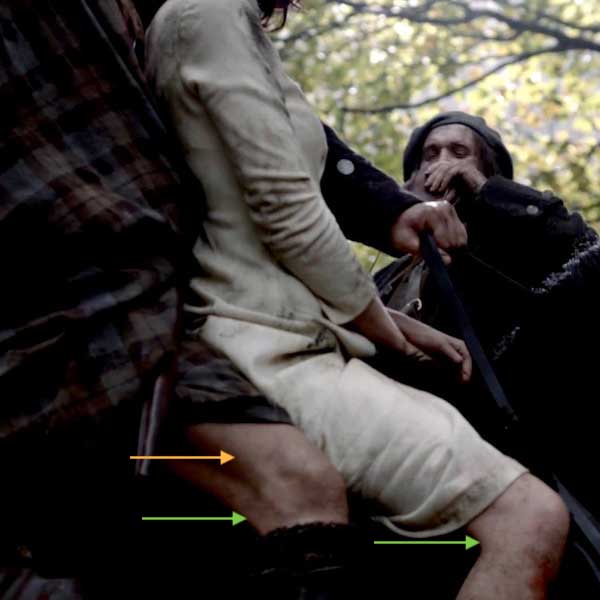
It took more than a bit of sleuthing to find an Outlander image showing inner hamstring tendons. Probably the best comes from The Wedding (Starz episode 107). Squee! Shift eyes, ahem, to Jamie’s left inner thigh; green arrow marks a ridge created by tendons of semitendinosus and semimembranosus. Flexed knee brought to you by power of the mighty hamstrings!
Although a bit later in their relationship, this quote from Dragonfly in Amber book says it all!
I scooped out a good bit of the salve and spread it down the long muscle of the thigh, pushing Jamie’s kilt above his hip to keep out of the way. The flesh of his leg was warm; not the heat of infection, only the normal heat of a young male body, flushed with exercise and the glowing pulse of health. I massaged the cream gently into the skin, feeling the swell of the hard muscle, probing the divisions of quadriceps and hamstring. Jamie made a small grunting sound as I rubbed harder. “Hurt?” I asked. “Aye, a bit, but don’t stop,” he answered.
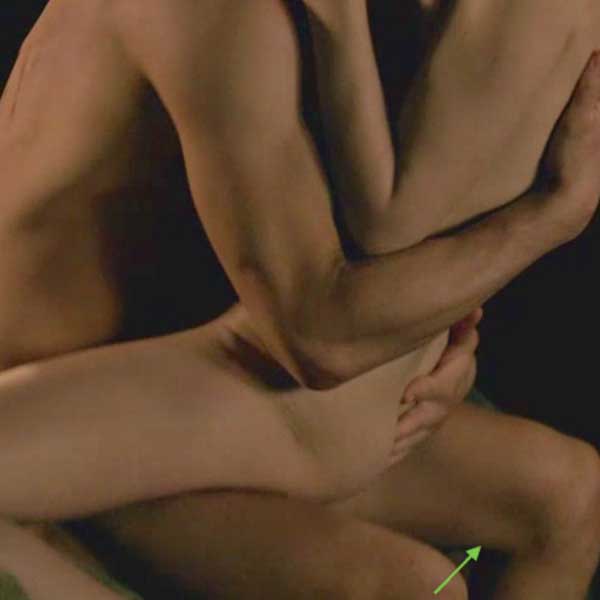
Hamstring Injury: Moving on… anyone who has suffered a hamstring pull understands just how much we rely on these muscles. You can scarcely engage in a single lower-limb activity without feeling the burn. Yeow! This is a short list of things which contribute to hamstring injury:
- Sitting for long periods of time
- Sitting on a hard surfaces, putting pressure on the hamstrings
- Kicking any ball (football, soccer)
- Hurdles
- Splits
- Poorly conditioned folks suddenly trying things they once did as teenagers!
Hamstring Stretch: Because we are so dependent on hamstrings, it is important to keep them supple by stretching. This can be done sitting, standing or reclining (Image K). Anatomically, the reclining stretch is safest because shoulders, head, spine and hips are supported by the floor; sitting and standing stretches can result in hunched backs, arched necks and hips out of alignment. Here are some pointers:
- Keep hips and shoulders flat and aligned
- Contract abdominal muscles to support the lower back
- Flex both ankles
- Grip hands behind the thigh (NOT behind the knee)
- Gently lift one limb until resistance is met – then stop! Don’t force the lifted limb
- Don’t arch the neck or back
- Alternatively, flex the down knee to release tension on the raised hamstrings
- Alternatively, pass a towel behind the up thigh and gently pull on towel to lift

Image K
Videos can be helpful, so the next one demonstrates a good hamstring stretch. As with the above photo, hands go behind the thigh with the interesting addition of flexing alternating with not flexing the ankle joint. Some yoga practitioners grip the great (peace) toe, which works wonderfully if one is a seasoned hamstring stretcher, otherwise avoid!
Sciatic Nerve: A note about the sciatic nerve, the largest of the body (Image L). This behemoth (in adults, it rivals the size of my thumb!) courses down the back of the thigh hidden by gluteus maximus and hamstrings. It gives off twigs to innervate all the hamstring muscles, crosses the knee joint and supplies most of the leg and foot. It is a very busy nerve, hence its size. Sciatic nerve pain is a common affliction but must wait for another lesson. So sorry!
Popliteal Vessels: Behind the knee lies the popliteal fossa, a potential space filled with fat and blood vessels. The large popliteal artery and vein descend through this space to supply knee, leg and foot. These are at risk during hamstringing. If severed, the victim will bleed out, very quickly!
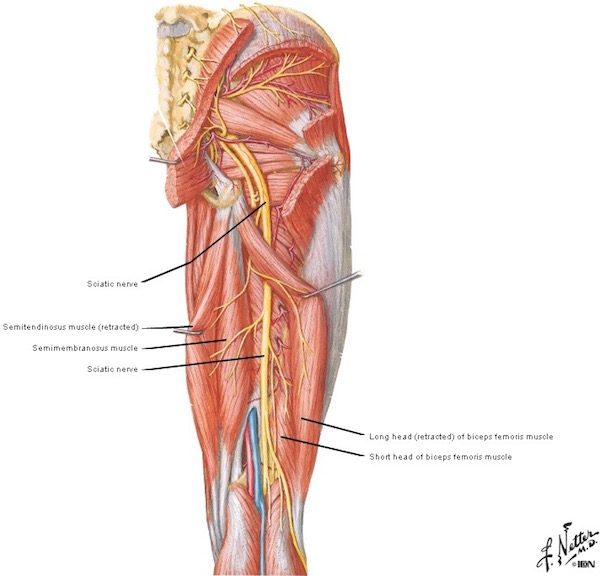
Image L
Switching gears, do you recall this terrified wee fellow? He served as Colum’s tailor-of-the-day (Starz episode 103, The Way Out). His wife was a MacKenzie, but kinship won’t protect him from Colum’s dirk! The MacKenzie chieftain was mightily p.o.ed at the tailor because his newly minted frock coat was too long. Did the tailor mean to hide Colum’s legs (Anatomy Lesson #27, “Colum’s Legs and Other Things too!”)? Well, erm, aye, he did, but he hadn’t planed to lose his larynx over a Heiland fashion statement (Anatomy Lesson #42, “The Voice – No, not that One!”).
What in the world does a tailor have to do with the posterior thigh? Read on!
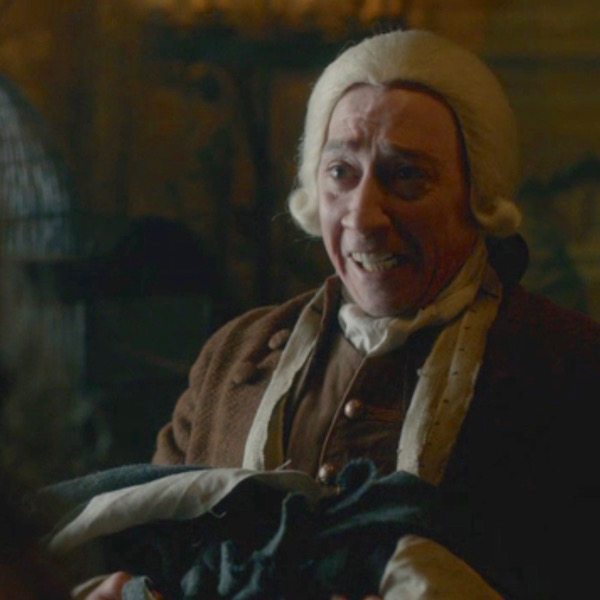
Perhaps you recall at lesson start, I mentioned we would cover two other muscles, one from anterior and one from medial thigh compartments (review Image B). Here we go!
Sartorius: The sartorius muscle spirals down the anterior thigh. Its name derives from the Latin sartor meaning, tailor. Why? Because, back when garments were hand sewn, many tailors assumed a cross-legged posture so the knees could support a garment under construction (Image M). Sartorii (pl.) are engaged in adopting the cross-legged position, hence the name.

Image M
The striking sartorius muscles are very apparent in this female body builder (Image N). Thin, flat and superficial, we rarely see sartorii except in folks who are heavily muscled and/or express little subcutaneous fat (Anatomy Lesson #5, “Claire’s Skin – Opal, Ivory and White Velvet”).
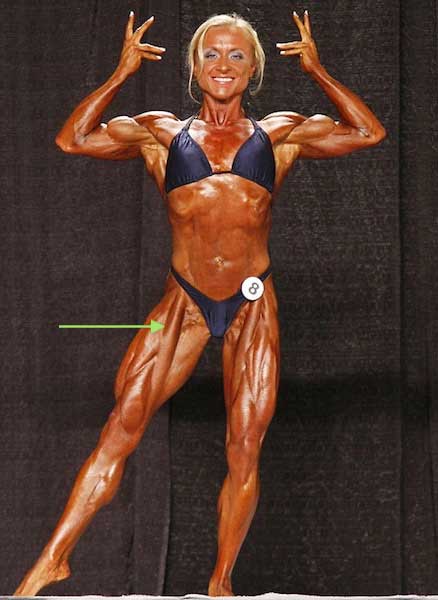
Image N
Spiraling down the thigh but superficial to the quadriceps (Image O), sartorius is the body’s longest muscle (love superlatives)! Sartorii can be pulled during activities which require a forcefully push off, as with sprinting, jumping and running. Thus, sports, such as hockey, rugby, football or basketball, place one at higher risk of injuring this muscle, although improperly-performed squats can also do the trick. Pain can occur anywhere along the length of sartorius with groin and inner knee as common sites of complaint.
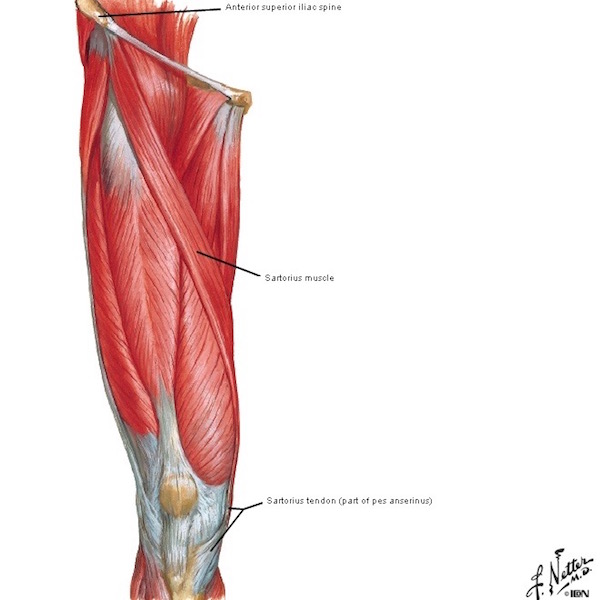
Image O
Sartorius belongs to the anterior thigh compartment. It takes origin from a knob of hip bone, the anterior superior iliac spine or ASIS (Image P). Crossing both hip and knee joints, the muscle arcs across the front of the thigh to end in the anteromedial tibia.
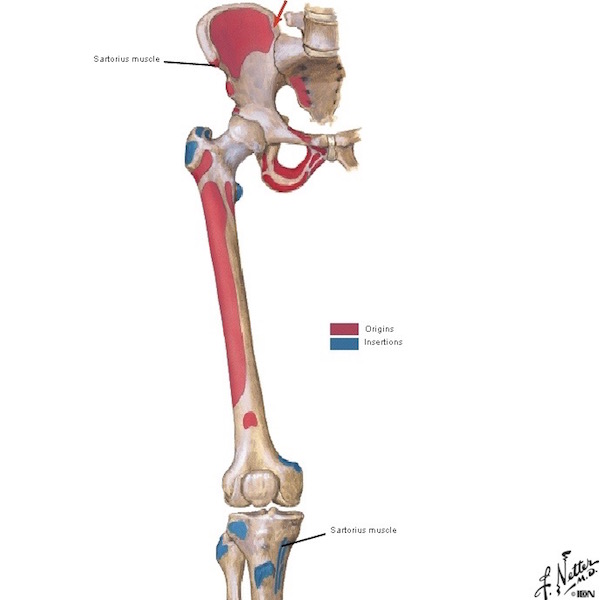
Image P
As each sartorius contracts, hip and knee joints flex and knee rotate laterally (to the side) as in yoga’s lotus pose (Image Q). Sartorii don’t appear in Image Q because the feet cover them.
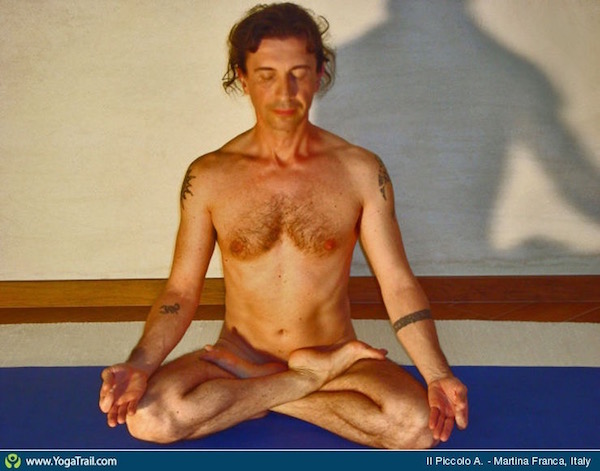
Image Q
However, this image of a yoga practitioner entering half-bound lotus pose nicely shows the left sartorius (Image R – double arrow); its tendon creates a skin groove just above the arrow.
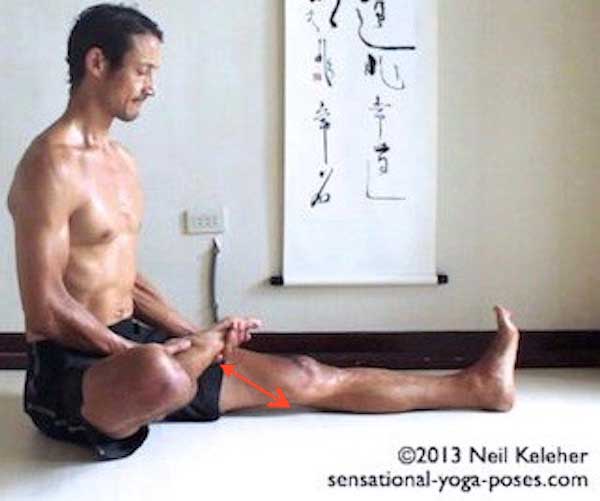
Image R
And, Jamie reveals a near perfect sartorius groove (of course) as he scolds new wifey: Lassie, I tell you the truth about Ned Gowan and that strumpet! Ned paid a high price for your splendid wedding dress; a dirty job against which he fought, valiantly. Ha!
See the thigh groove created by Jamie’s left sartorius (Starz episode 107, The Wedding)? Look closely, a red arrow marks the groove directly behind his vast vastus medialis, (Anatomy Lesson #7, “Jamie’s Thighs” or “Ode to Joy!”). Got it? Yay!
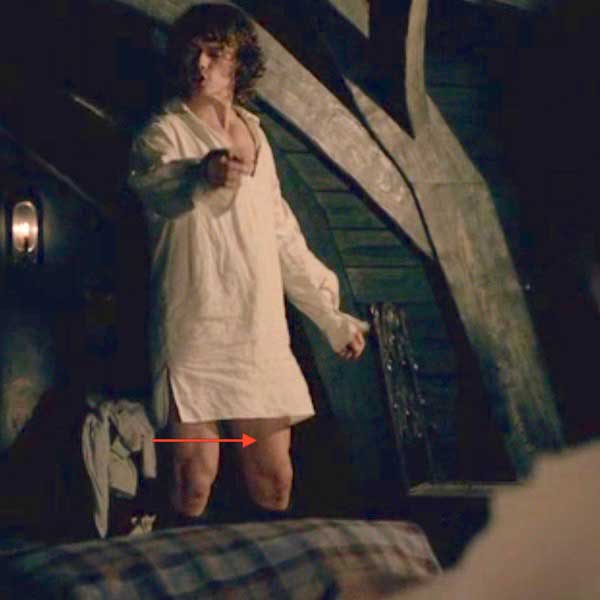
Gracilis: Graceful gracilis belongs to the medial thigh compartment (review Image B). Derived from the Latin gracilis meaning slender, this is the most superficial muscle of the medial thigh (Image S). It is thin and flat, broad above, narrow and tapering below. Like true hamstrings and sartorius, gracilis also crosses both hip and knee joints.
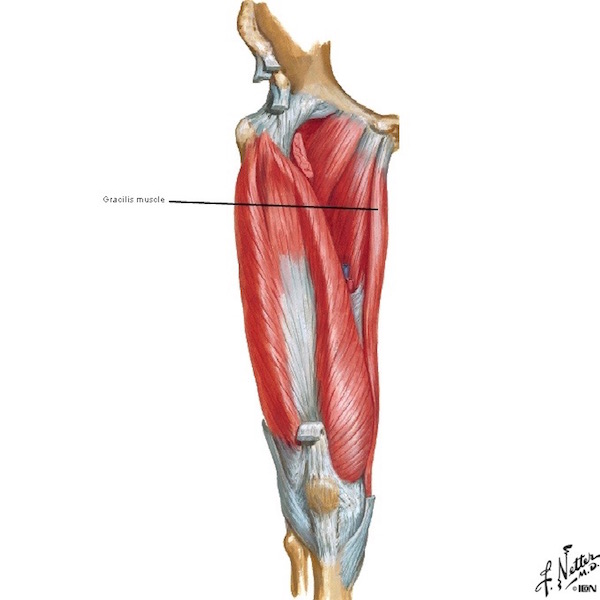
Image S
Gracilis takes origin from the pubic bone and inserts on anteromedial tibia (Image T). It helps adduct the thigh (draw toward body midline) and is a weak flexor of both hip and knee joints. Interestingly, gracilis is widely used in reconstructive surgery as a replacement for facial muscles, hand muscles or the external anal sphincter. Loss of the gracilis is not disabling as larger, stronger muscles of the medial compartment are able to compensate.
Clinical Correlation: A few years back, surgeons teaching in my anatomy course presented a case wherein they replaced the external anal sphincter with gracilis muscle, performed on a young woman who had suffered a horrific injury in an auto accident. So shocking and graphic, one of our first year medical students fainted, undoubtedly from vasovagal syncopy wherein heart rate and blood pressure suddenly drop due to extreme emotional distress. Yes, that brought this memorable lecture to a halt! But, the student soon regained consciousness and composure and this gave the surgeon a teaching moment to explain what had happened. I am pleased to report that not only student recovery but the reconstructive surgery were both successful. Surgeons I worked with were very resourceful docs and imaginative thinkers. Their motto: A chance to cut is a chance to cure! Very confident folks, the surgeons.
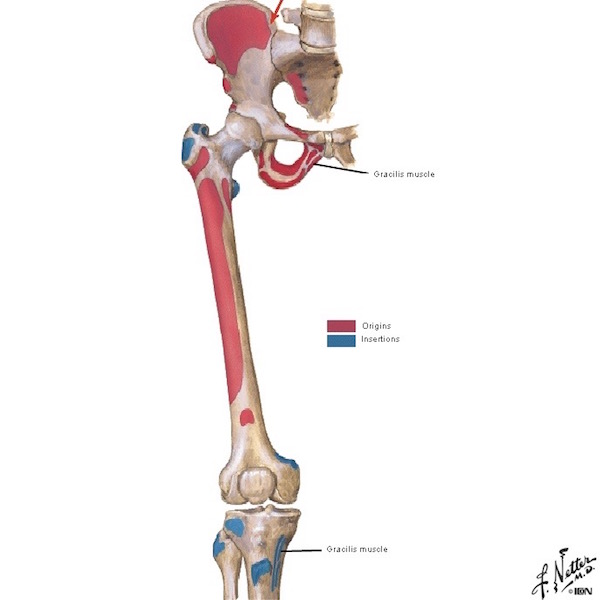
Image T
Pes Anserinus: Now, perhaps you spy an insertion theme: tendons of sartorius, gracillis and semitendinosus all converge and insert as a unit into anteromedial tibia. At insertion, they form a webbed configuration known as the pes anserinus, Latin for goose foot. The name, “goose foot,” arises from a three-pronged appearance assumed by the three tendons, each from a different thigh compartment (Image U). The order of insertion from front to back can be recalled using the acronym for sergeant: SGT for sartorius, gracilis, semitendinosus. Now, this seems especially appropriate because sergeant comes from the Latin servier meaning “one who serves”; an apt moniker for these three hardworking “guy ropes” as they are sometimes called!
All three pes anserinus muscles are primarily knee flexers but studies show that the peculiar three-pronged insertion provides rotatory stability to the knee, meaning together they stabilize external (outward/lateral) rotation of the knee. Hallelujah! Why? Remember, the knee joint is inherently unstable because its constituent bones do not enjoy a ball and socket type of interaction (Anatomy Lesson #7, “Jamie’s Thighs or Ode to Joy!”). Ergo, the joint is provided with numerous ligaments and tendons, including pes anserinus, to ramp-up stability. Go anatomy!
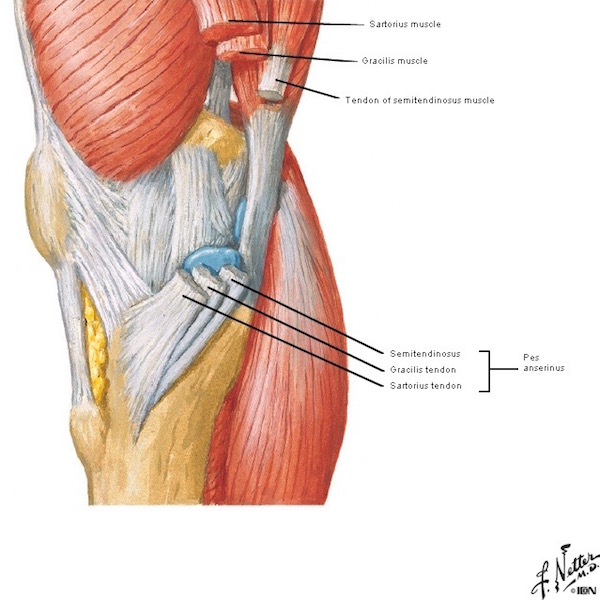
Image U
Goose Foot: Did you see a goose’s foot in the pes anserinus? No? OK, then, let’s look at a goose’s foot! How about now (Image V) – see the three pronged toes joined by webbing? Still not convinced? Understand that early anatomists didn’t have magazines, internet, social media, TV or movies for creative word imagery so they drew on the natural world to devise a new language describing body parts and passions (Lesson #34, “The Amazing Saga of Human Anatomy”). Many of their words may seem quaint but, some 500+ years ago, they were cutting edge!
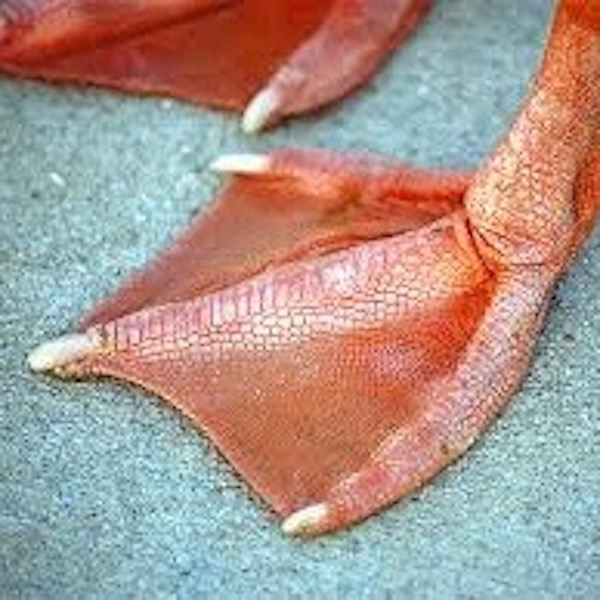
Image V
That’s it for the hamstrings and its two closely allied pals. Remember, these muscles are important in virtually all types of ambulation. The next time you stride through a mall seeking new fashions, kick a soccer ball or chase down an errant child, please give a brief nod of thanks for these wonderful muscles!
Do you love art? I love art. Created by Steel Neal and installed at Cooper Square, NYC, “The Agony of Man” is a 1200 pound, 3 times life-size rendition of the human form (Image W). It is constructed entirely of salvaged scrap metal: I-beams, railroad track, rebar, boilers, New York City garbage cans. Teeth (Anatomy Lesson #26, “Jamie’s Chin – Manly Mentus”) were repurposed from road resurfacing equipment. Bony orbits (Anatomy Lesson #30, “Aye, Eye – The Eyes – Part 2!”) were salvaged from original park benches at Madison Square Park. Ribs (Anatomy Lesson #15,“Crouching Grants – Hidden Dagger”) are from the original concrete island of Worth Square.
Sartorii? Yes, there they are, spiraling across the front of thighs – these are made from an extinct type of rebar salvaged from the original foundation of the Union Square Subway Station. Indeed, an evocative rendering of human agony!
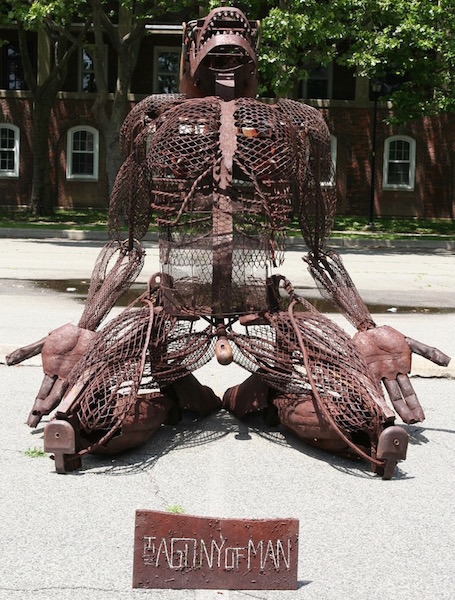
Image W
How does human agony fit into a lesson about “hamstring – you make my heart sing?” Well, because we, the wretched, are suffering from drrrrrouuuuughtlander (Photo X)! Gasp! Ron.com, must have a glass of OUTLANDER soon! Dying here!

Image X
All together now:
Hamstring!
You make our hearts sing!
You make everything,
groovy!!! (shamelessly lifted from the Troggs)
A deeply grateful,
Outlander Anatomist
Photo Creds: Starz, Netter’s Atlas of Human Anatomy, 4th edition (Images A, C, E, F, G, H, I, L, O, R, S, T), Outlander Anatomy photo collection, www.christineshipjoint.blogspot.com (Image M), www.getbig.com (Image N), www.keyword-suggestions.com (Image U), www.mnn.com (Image W), www.popsugar.com (Image K), www.sartoriusmusclepainigi.wordpress.com (Image V), www.seannal.com (Image D), www.sensation-yoga-poses.com (Image Q), www.thelancetnorway.com (Image B), www.wowwiki.wikia.com (Image J), www.yogatrail.com (Image P)

